Veterinary Economics
The farmer plays a vital role in ou.r economy as a supplier of food for the nation. Obviously, a healthy farm economy is dependent on healthy crops and food production animal'!. The veterinarian is indispensable to farmers in their attempt to maintain a healthy economy. ln a very broad sense, veterinary economics is Dr. John Fetrow's specialization. A field service \'eterinarian and a member of the teaching staff at New Bolton Center, Dr. Fetrow sees economics as playing an increas· ingly important role in the treatment of herd
animal diseases and in research f01: better way�; to maintain herd health.

Dr. Fetrow looks at disease from both clini· cal and busineSM points of view. As a veterinarian, he is naturally concerned with the diagnosis, treatment, and prevention of diseases in food production animals, primarily in the dairy industry, his specialty. From a business standpoint, he evaluates the economic impact of disease on the farmer's livelihood. As the number of farms decrease and the methods of raising food production animals become more sophisticated, the economics of disease prevention and herd health maintenance becomes a paramount concern for the \'eterinarian and the basis for continuing research.
"For fanners to get the highest return on their investments, it is critical for them to keep their arumals heaJthy, producing milk and meat to meet the demands of the con· sumer market," explained Dr. Fetrow. "Today's farmer does this in the most cost-effective way postoible. While certain diseases or epidemic proportion can devastate a farmer's herd, other diseases of a suh-clinical variety can also affect an animal's production. Curing the problem is not enough; we have to look at the causes and practice preventative medicine."
Parasites, mastitis, and even disea!les of the hoof are examples of illness that can throw an animal off its feed, thus affecting its production. In many cases, the cause of the problem is difficult to detect since the animal appears to be healthy, but is not producing as it Rhould. ..As I tell my students, curing a comman disorder in a cow is only useful if you can prevent it from occurring in the future. While the economic impact of disease is costly, so is research. Essentially, animal disease and death are measured in dollar terms," he added.
Dr. Fetrow teaches two courses, ..Animal Health Economy," a first-semester elective, fol· lowed by "Production System Economy." In both, he incorporates microeconomic theory. "We look at all aspects of food production and at the economics of the agricultural management system in the dairy, beef, veal, swine, sheep, poultry, and equine industries. We're also concerned with the breeding and farrow· ing industries and the methods employed to produce heaJthy offspring. I also tell the students how little money they're going to make as a practicing veterinarian," he said laughingly.
According to Dr. Fetrow, the practice of veterinary medicine over the years had a "seat· of-the-pant!!" approach. The philosophy was to diagnose it and fix i.t. But today more than (continued on page 11)

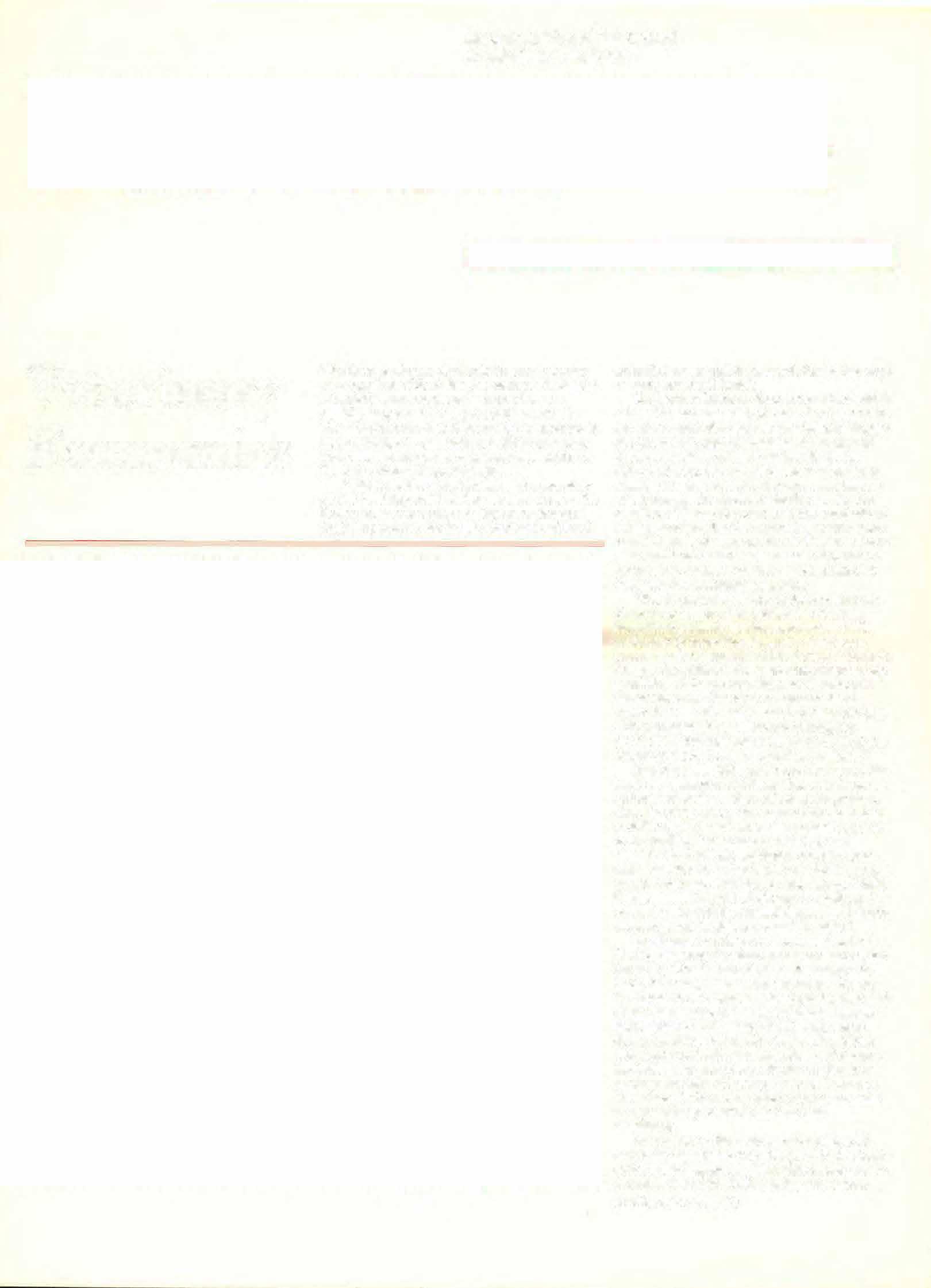
Newsmagazine of the School of Veterinary Medicine
Sum.lller 1982 Research In The Basic Medical Sciences
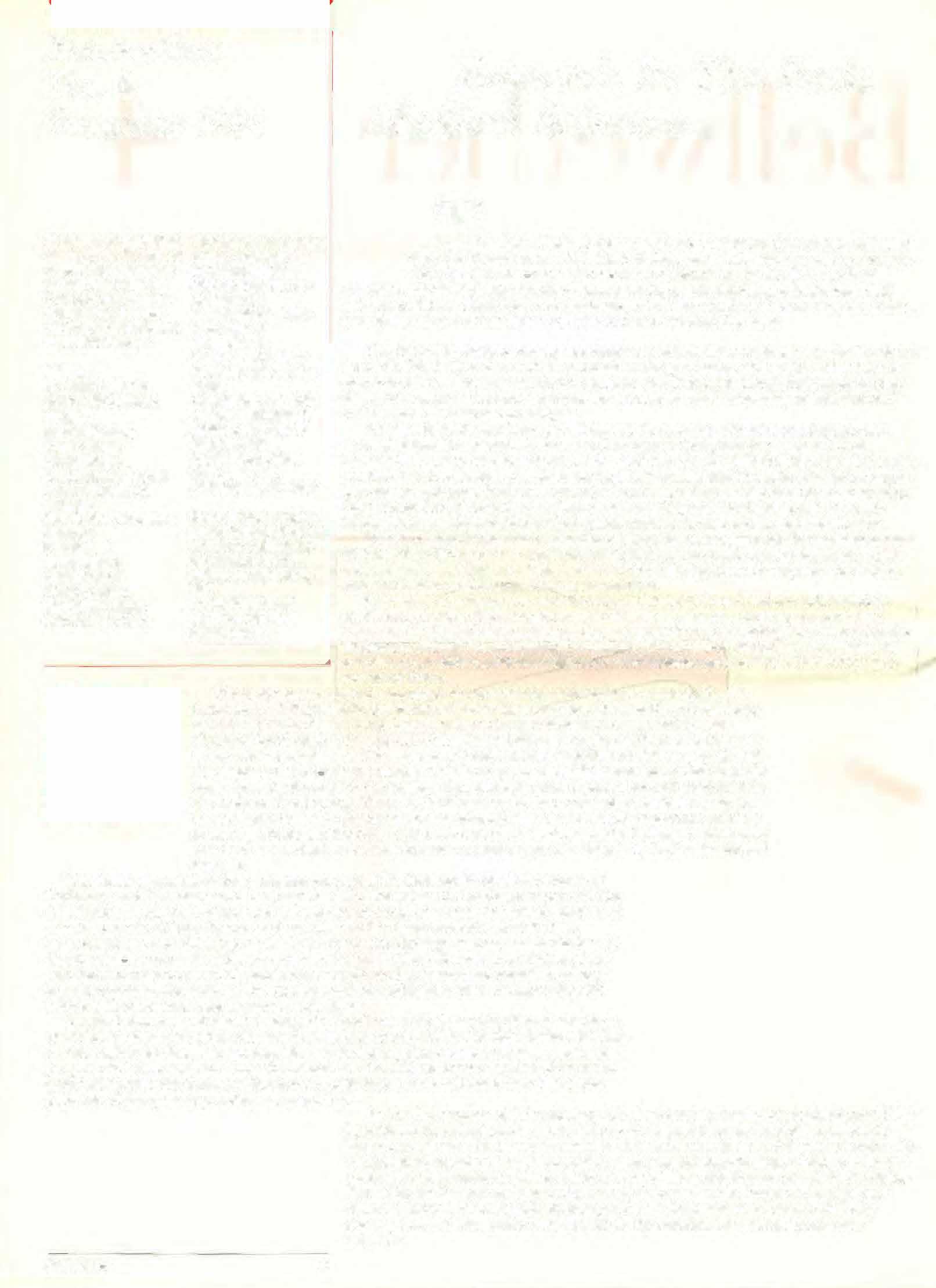
Bellwether is published quarterly by the School of Veterinary Medicine at the University of Pennsylvania, in cooperation with the University of Pennsylvania Publications Office.
Editors:
Or. John E. Martin
Sharon McCullough
Writers:
Marcia Maziarz
Carol Watson
Helma Weeks
Dr. Josephine Ouebler (Animal Crackers)
Designer:
Two Twelve Associates
Illustrator
Paul Meisel
Photographers:
Diane Feltoon
Lynne Kressley
New Bolton Liaison:
Catherine Larmore
We'd like to hear your praise, criticisms, or comments. Please address your correspondence to: Dr. John Martin, Editor. University of Pennsylvania. School of Veterinary Medicine, 3800 Spruce Street, Philadelphia, PA 19104. or Sharon McCullough, Editor, University of Pennsylvania Publications Office, 410 Logan Hall, Philadelphia, PA 19104
None of these articles are to be reproduced in any form without the permission of the editors of Bellwether.
1981 by the Trustees of the University of Pennsylvania.
The Basic Medical Sciences at the Veterinary School are organized into the Departments of Animal Biology and Patb.obiology and are responsihle for the education of veterinary students in the fundamentals of anatomy. physiology, biochemistry, pharmacology, microbiology, parasit.ology, and pathology. These disciplines are fundamental to the practice of veterinary medicine, providing the art of medicine with its rational or scientific basis.
The School is unique among veterinary schools in its commitment to basic science research. We believe research is essential to the profession and to the School for it inspires our teaching of veterinary students and it is from accomplishments in fundamental research that new avenues for treatment and prevention of both animal and human diseases are developed.
Veterinary medicine has a proud history in research. Veterinary scientists discovered filterable animal viruses, the first tumor virus, and the cause of viral encephalitis. They developed tuberculin and the test for tuberculosis, the first tumor vaccine, tetanus toxoid, and characterized Salmonella and Brucella (the latter organism causes undulant fever in humans). Veterinary scientists devised the first successful therapy for hookwor'm. the first electrocardiogram, provided proof of insecthorne disease and devised the first spinal anesthesia and cardiac catheterization.
Today, rapid advances in molecular biology, immunology, and the neurosciences increase the ability to use sophisticated techniques in fundamental research, which may generate exciting new information which will significantly improve the health and productivity of huma11s a1ld their animals.
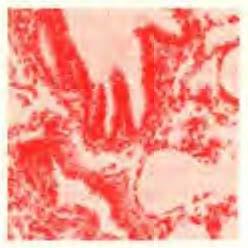
Fundamental research at our Veterinary School is broad and of such scientific merit that, despite the constriction of funds for research which has occured elsewhere in the United States during the past several yt:aTS, funding ior re�earch at the Veterinary School has continued to expand. This research strength is nourished by our close ties with the Medical SchooJ and the philosophy of "One University" promoted at Penn.
There are many current examples of our achievements in ba8iC research. In tl1e Laboratory of Physiology, Dr. Brinster·'s work involves recombinant DNA technology and the introduction of new, functional genetic material into the nuclei of eggs obtained from mice. The eggs are re-implanted into surrogate mothers and the reguLation and expression of this new genetic information is followed during growth and development of recipient animals. This is of great scientific importance, and is made even more significant by the finding that the new gene is passed on and expressed in the recipient's offsp1·iug. Thus, with this powerful new research technique. there is the prospect that new genes can he introduced into economically important animals to increase their productivity and their resistance to disease. Dr. Brinster's work may also lead to methods of curing diseases caused by genetic defects in both animals and humans.
The field of genetic defects has also attracted Dr. Haskins in the Laboratory of Pathology and his colleagues, Dr. Jezyk and Dr. Patterson in the Department of Clinical Studies. They have identified the molecular error in several inherited diseases of cats. The mode of inheritance of these diseases has been worked out and these researchers are now devising methods of treatment throllgh enzyme manipulation of the deranged systems in affected animals. As these feline diseases are models of certain human inborn errors of metabolism manifested as mental retardation, among other symptoms, the work ot' Dr. Haskins and his colleagues aims at improving the health of both animal and human populations.
In the Laboratory of Biochemistry, Dr. Avadhani is studying the sites of attack on the DNA molecule by aflatoxin, which is an important and lethal liver toxin affecting a wide variety of domestic species. Since it is also a potent cancer-causing agent, this property is being used to determine which arc the critical targets on the DNA molecule respont�ible for traosfoz·ming normal cells into tumor cells and how tJ1ese new patterns of the gene expresRion are reglllated.
In the Laboratory of Microbiology, Dr. Lawrence iii employing sophisticated DNA hybridization techniques to study herpes virus infections in several economically important diseaRes in domestic animals. These diseases indude infectiolls bovine rhinotracheitis, equine rhinopneumonitis, and pseudorabies in pigs, which i.�; a disease cunentJy sweeping through the United Ste�tes. These studies are aimed at the detection of latent herpes virus genes in new·al tissues of cattle, horses, and pigs, and characterization of immuno1ogically significant components of herpes virus for development. of diagnosti<' tests as well as the creation of vaccines from virus subunits.
Bellwether No.4
Bellwether 2
The Veterin1ny School also enjoys a great reputation in cardiovascular research. Dr. Detweiler, head of the Laboratory of Physiology, has set an international standard with his research in hypertension and his knowledge of comparative electrocardiography. Dr. Chacko, in the Laboratory of Pathology, has also recently received worldwide recognition for his studies of the biochemical mechanisms which regulate blood pressure through arterial wall contraction and relaxation in normal and hypertensive animal!:<.. These comparative studies will be of use in the development of drugs to control blood pressure in animals and humans. In the Laboratory of Physiology, Drs. Moore and Spear have made a fundamental contribution to our knowledge of cardiac arrytbmias. Cardiac arrythmias resuh in rapid, uncoordinated beats, causing the heart to fail as a pump, and this is a major cause of death in animals and humans. Arrythmias often occur secondary to congestive heart failure and myocardial iniarction. Drs. Moore and Spear have successfuJJy developed a chronic model of car· diac infarction in the dog and, from this, have identified a number of the mecha· n.isms which ge1r1.erate lethal arrythmias. Their research has led to a successful surgi· cal technique which limits the incidence of lethaJ arrythmias after myocardial infarction in humans. Drs. Moore and Spear are presently investigating the efficacy of a variety of drugs for the same purpose, as well as attempting to develop computerized pacing techniques to control arrytbmias when they occur.
Though we are still woefully ignorant, understanding of the complex functions of the central nenouf:i sy�:.�tem has greatly accelerated dudng the past few years. This has been achieved from a synthesis of work in many fields of neurobiology including contributions concerning the regulation of behavior from our talented group of neuroscient.ists, Drs. Hand, Miselis, and Morrison, in the La.boratory of Anatomy. Dr. .:Vlorrison is an authority on neural regulation of sleep and •of the ways in which sleep disot'tler:s'aft\i·�t t��piratory and cardiac function. This work. has recently been extended to studies of the neural pathways of aggression. D.r. Hand uses sophisticated mapping tecltnif!Ues to study the pathways of somatic sensallion. including pain, and Dr. MiseJjs is dojng fundamental research on the neural co111trol of drinking behavior and water and sail con\'lervation by the kidney.


The Laboratory of Parasitology is the center for parasitologic studies in the University. It has acquired an internationnl reputation from its studies in the field of immunoparasitology, research which focuse�S on the interactions between host and parasite. and particularly on the antig.ens parasites produce at various stages of their life cycle. The mechanism.<; controlling host immunologic responses to parasite infection ue also under investigation. Furthermore, the experience gained by this and other research in the Laboratory of Pa:rasitology places this group in a unique position to expand and initiate new research into the area of tropical veterinary parasi· tology. This field is neglected in the United States, but in countries of the third world is of immense economic importance to the animal industry. It is also of great public health importance, for in many instances animals act as reservoiro for human parasitic infection.
Recently, Dr. Grieve, a member of the Laboratory of Parasitology, developed a serologic test whic11 detects antibodies produced against antigens of adult heartworms. From a diagnostic standpoint this is an important contribution to the veterinary profession Using new techniques to recover antigens from early larval stages, Dr. Grieve is no•w studying ways of creating a vaccine for heartworm infection which, if accomplished, will have a significant impact upon the health of the dog population throughout the world.
Ed. Note: These few examples serve to give some perspective about the quality and range of re:�earch in the basic sciences in the School of Vet.erinary Medicine. In future issues of Bellwether we wiU report on basic research being done by other individuals.
This article w.as prepared by Dr. Alan Kelly, profes�or of pathology, Dr. Wilfried T. Weber, professor of pathology, and acting chairperson. of th.c department of Pathobiol· ogy, and Dr. Leon P. Weiss, professor of cell biology and chair·person of the Department of Animal Biology.
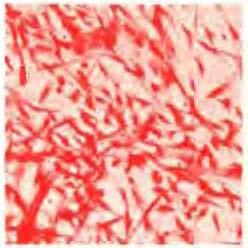
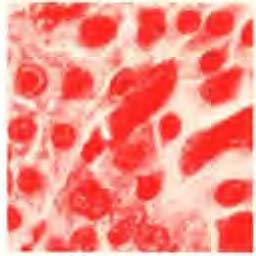
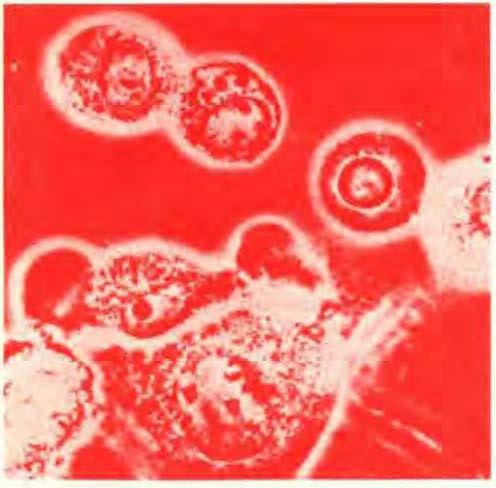
Summer 1982
3
The Palmerton Problem
A Special Cat
Althou�h the original and most obvious mission of the veterinary profession is the delivery of direct health care to animals, the profession bas a growing Jist of other responsibilities. In fact, of aU of the health professions, veterinary medicine has the most diverse responsibilities.
One area in which veterinarians are devel· oping important roles is enviromnental pollu· tion. Veterinarians are frequently in the posi· tion to be the first to detect health problems resulting from poJJution since such disorders often surface initially in animals. This point is well iJlustrated in the case of heavy metal toxi· cosis resulting from soil pollution, in the region of Palmerton. PA. located in Carbon County, in the Allentown vicinity.
About five years ago, Dr. Rennie C. Shoop (V'73), u practitioner, noted the occurrence of what he considered to be some strange meta· bolic problems in horses and cattle. The animals exhibited unthriftiness, fatigue, lameness, and, in some cases, spontaneous fractures. Horseowners complained that it was impos· sible for them to raise animals on local forage because foals developed severe lameness and �mthriftinesa.


Afll a result of Dr. Shoop's observations and soil surveys conducted by the United States Department of Agriculture (USDA), some faculty members of the School of Veterinary Medicine became involved in the problem. These included Dr. Diane Gunson. assistant professor of pathology, Dr. David Kowalczyk., assistant professor of pharmacology and toxi· cology. and Dr. Charle.s Ramberg, associate professor of nutritic,n. Studies by this group are still in the early stages, but have progressed far enough to indicate that there is a link between zinc and cadmium contamination of the soil with the severe lameness and other disorders observed in Palmerton.
A large zinc smelting plant is located near Palmerton, and, in 1975, a USDA study showed that soil within a ten-mile radius of the plant contained sixty to seventy-five times the nor· mal content of cadmium. It is known that cadmium is a byproduct of the smelting operation. Further studies, in l975 and 1977, by the U.S. Environmental Protection A�ency showed significantly increased levels of cadmium in the hair and blood of children living in the area.
Recently. Dr. Gunson autopsied three horses from the Palmerton region. Two of these were foals that had been born and raised on locally-grown forage. They had a history of stiffness, severe lameness, and marked unthriftiness, with swollen and painful joints. An autopsy indicated severe osteochondrosis, with lesions similar to those observed in exper· imental animals that were fed hi�h zinc diets. The joint lesions consisted of rarefaction, separation, loss of pieces of cartila�e, and swellin,; due to accumuJation of synovial fluid. The foals also showed osteoporosis. and in one animal there was severe nephrocalcinosis. In another animal the hone marrow was gray and gelatinous, rather than the norma.l red color.
These findings are compatible with cadmium toxicosis. The dam of one of these foals had died following puncture of the lung associated with rib fractures. although there had been no history of injury. On autopsy the mare showed nephrocalcinosis which is consistent with cadmium toxicosis. High concentrations of zinc and c-alcium were found in the pancreas. liver, and kidney of these horses.
�ause various heavy metals, such as lead, sulfur, zinc, and cadmium oxist together as pollutants from smelting operations, it is difficult to specifically identify which are involved in producing particular clinical signs or pathological chan�tes. The picture becomes more complicated by the fact that these heavy metals have some complex interactions in the body. For example, it is known that prolonged high intake of zinc may lead to a copper deficiency. Despite these complexities, and the obvious need for further studies, the findings in these animals point to cadmium and zinc toxicity, and, probably. a secondary copper deficiency. Copper is involved in the production of coUageo crosslinks in the body. Colla· �en is a necessary ingredient for strong connt» tive tissue. and one patholo,;ical change observed in copper deficiency is osteochondrosis. This study also illustrates the importance of considering species differences in evaluating environmental pollution. Horses, and some other species, are known to store cadmium in the kidney cortex, and this could explain the nephrocalcinosis in two animals, since cad· rnium toxicity leads to proteinuria and the formation of calcium phosphate crystals. Apparently cows do .not store cadmium in this manner, and autopsies of cattle from the Pal· merton nlea revealed an absence of nephrocalcinosis. Cattle also showed low levels of stored cadmium despite high levels of the metal in hay from these farms.
To further study the problem of soil poilu· lion in the Palmerton area, Dr. Gunson and her p-oup have acquired five pony foals which are being raised in the area on local herbage. Dr. Gunson indicates that the reduction of smelting operations. which occured in Palmer· ton during the past year, is not the complete answer to the problem_, although the awesome pollution level wiU be reduced. The problem is that hea\')' metals remain in the soil for many years and will con1inue to be pr-esent in herbage. One possible treatment for animals ingesting forage contaminated with cadmium and zinc would be to supplement the diet with copper. This is being tried on one Palmerton dairy farm.
The cats liYing and playin��t in bright sunny quarters on the second floor of the new vet· erinary hospital are unaware of their impor· tance to medical research. These Siamese and domestic shorthaired cats provide animal models for the study of lysosomal storage diseases, a rure �roup oi disorders affecting humans. The colony was established several years ago after a young Siamese cat, seen at the clinic, was diagnosed as having mucopolysaccbaridosis (MPS), a lysosomal storage disease caused by a defect in glycosaminoglycan (GAG) metabolism.
It was the beginning of an extensive, con· tinuous research effort by the section of medical genetics and pathology at the Vet· erinary School, involving the support of vir· lually every department here, as well as researchers in the division of medical genet· ics at the Mount Sinai School of Medicine, New York, N.Y.

Mark E. Haskins, V.M.D., Ph.D., assistant professor of pathology and medical genetics, is one of the investigators of MPS, its occurrence and manifestations in cats, and how this compares to the disease in humans. The research htlS caused him and the other inves· tigators to delve into the function of the body, not only in term!\ of organs, hut in terms of cells and molt"cu1es.
Dr. Haskins explained that the life of an organism depends upon a multitude of chemical reactions taking place in each cell. Cells are hi�hly specialized chemical factories. Each, in order to fulfiLl its (unction, depends on the catalytic role of enzymes. These complex molec11les form coiled, folded, three dimensional chains. Each enzyme differs in function, ita properties determined by the number and type of amino acid11 it contains, their sequence, and the spatial arrangement of the chain. Enzymes do not occur randomly but are specific to each cell type. The production of all enzymes is controlled by DNA, the genetic material.
En�ymes act as catalysts on specific chemical hoods; one can think of them as a key working a specific lock. Degradative enzymes break bonds in a set sequence and if one enzyme in a cell fails to work properly, the other enzymes needed to facilitate a com· plete chemical reaction wiU not function. A fauJty enzyme may block the process of breaking down moJecuJes and these, then. often are trapped within the cell.
This happens in MPS. The DNA in affected individuals has changed sJightly and a faulty enzyme is proauced. MPS patients lack the ability to break down GAG. The cells cope with the dysfunction by storing the GAG molecules in their lysosomals. The accumuJation of material causes the cells to enlarge and this may interefere with their proper fuu('tion. The error, occuring on the ceUular level, has serious consequences for the organism, be it human, cat, or another species.
MPS manifests itself with varying severity, depending on the enzyme deficiency
BeUwether 4
Jr. IJion1• {,unaun
Colony
The colony was established se-veral years ago after a young Siamese cat, seen at the clinic, was diagnosed as having mucopolysaccharidosis (MPS). a lysosomal storage disease cau.sed by a defect in glycosaminoglycan (GAG) metabolism.

3.
3.
involved. The Siamese cat was diagnosed as having MPS VI, one of the less severe forms of the syndrome. The most severe form of these diseases is Hu1·Ler syndrome, a form of MPS I, which causes mental retardation in humans and lends to death in the first decade of life. This syndrome has been iden· tified in cats all!lo. There arc dozens of lyso· !lomaJ storage diseases in humans, eleven have been identified in animals so far, six of those in cats. The development of animal models permits re�earchers to study the problem in deptl1 and on a larl{e scale. Cats reproduce quirkly, and the disease can be observed as it progresses in the animal tbrou�houl its life.
The cats with MPS VI, like their human counterparts, are dwarfed) with a broad head and widely set eyes. The corneas are clouded and the nose is shortened. They have big feet and hone malformations, particularly in the spine. Bones show signs of degenerative joint disease and organs Like the heart, liver, and spleen are also affected. Enlarged cells can be found in the connective tissues. It is thought that the enlarged cells interfere with the normal tissue and bone development and cause the physlcal manifestations of the dis· ease. MPS VI, unlike MPS I, does not cause mental retardation.
The colony of cats at the Veterinary School consists of four distinct families. The original stock was Siamese; the cats in the colony now are results of crosses between afflicted cats, carriers, and healthy domestic cats. The disorder in cats, like in humans, is an autosomal recessive trait. A method bas been developed to accurately identify carri· ers through a bloodtest, a test which is equally effective for carder identification in people.
Researchers found that the enzyme aryl· sulfatase B, defective in MPS VI, differs in structure in cats from the same enzyme in people. In cats it is a dimer and in people it is a monomer. The disease in cats appears due to an inability to make the two-part dimer structure and this distinct characteristic permits partial restoration of the enzyme's function through the administration of a drug, cysteamine. This drug, by

hreakinp; the disulfide bonds, restores partial enzyme activity for short periods of time in affected cats. Work is in progress to deter· mine the dosap;e needed for a long term effect. While the!ie findings help cats, the drug is not effective for people and the search for a solution continues.
Such a search is also under way for relief for MPS I patients, a form of the disease wb.icb affects the brain because GAG is stored in the neurons there. A second colony of cats, affected with MPS 1, was established at the School after the disorder was identi· fled in a domestic shorthaired cat. These cats show the same physical symptoms and cellular evidence as human MPS I patients, though they appear to be relatively normal in behavior. Dr. Haskins explained that it is difficult to assess mental retardation in animaiK.
In MPS I, the deficient enzyme is alpha· L-iduronidase. The disease occurs in three distinct clinical liyndromes in humans. The most severe form is Hurler syndrome, with neuron involvement. The mildest form is the Scheie syndrome. Here the patient has corneal cloudin� and some hone invohement, however, retardation is not evident and these people have a relatively normal lifespan. The third syndrome is Hurler-Scheie syndrome which Jies in severity between the other two. Once again, retardation may not be evident.
The Hurler syndrome, because of its severity, pre!'lents a special challenge. Dr. Hask.ins explained that one approach which might help such individuals would be the introduction of the normal enzyme into the body. Howe�·er. there are a number of problems which must be solved first. It is difficult to obtain the enzyme, to purify it, and to prevent an immune reaction. Also, once the enzyme is injected, it is quickly taken up by the liver and very little reaches other cells. The injected enzyme, because it is a large molecule, cannot cro8s the blood brain harrier and thus cannot reach the affected neurons.
The ideal treatment would he genetic engineering, to repair the defective DNA, hut that. is not feasible at present. Another
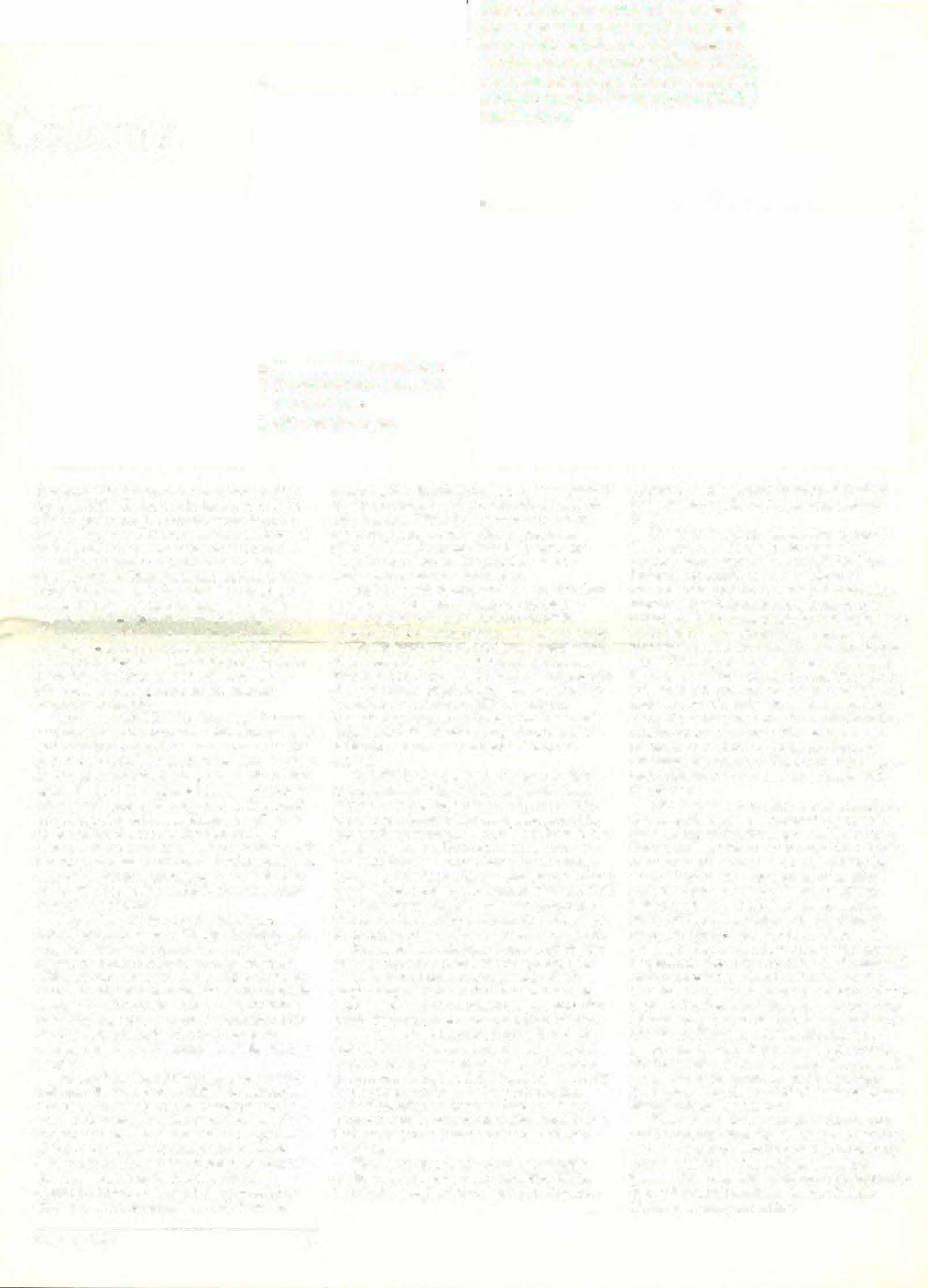
approach is the transplantation of healthy hone marrow cells which contain normal DNA.
It was this option which researchers at Penn selected. They plan to transplant healthy hone marrow into an affected cat. Before they could p1·oceed additional research was, and is, necessary. Little infor· mation about the immune system of cats existed and the oompatahility testing had not been done. The eat's immune system was investigated and the team is now developing the Lecbnology and protocol to accomplish bone marrow tranHplants in cats. They have transplanted bone marrow into a healthy cat and are now ohsen·ing it for immune reac· tions. Once they feel they have all the information necessary, they wi1l attempt tran.'!· pJants in cats with MPS I in the hope of arrestinp; the djsorder. This work has impor· tant implications for human patients with the disease.
The two animal models are invaluable to the indepth study of lysosomal storage dis· eases. Many of the findings would not have been possible without these models. The dis· coveries made so far were made jointly by researcher!'! in the department of medical genetics and pathology of the Veterinary School and by Robert J. Desnick, Ph.D., M.D., of the Mount Sinai School of Medi· cine. Dr. Desnick studies these diseases in children. The medical genetics group here at the School, the only one of its kind affiliated with a veterinary school, is beaded by Dr. Donald F. Patterson. Another member of the section, Dr. Peter F. Jezyk, also oversees the screeening program for metabolic diseases at Children's Hospital of Philadelphia. The group aJso is part of the Genetic Center at the University of Pennsylvania. The research is supported by grants from the National Institutes of Health and the March of Dimes Birth Defects Foundation.
The work with the two cat colonies was and is accomplished by utilizing the resource of many departments here at the Veterinary School and at the Mount Sinai Medical School. It is a multidisciplinary effort, reach· ing well beyond the boundaries of traditional veterinary medicine.
2.
I.
1. ot pi all rrurmal dam
2. Car affected with lysosomal !forage disease
Affected liuermates
Summer 1982 5
Microbes, Men, and Animals
Canine Epilepsy

Unlike gregarious human beings, animals do not hold conventions, and are therefore spared the discomfort� and death, visited upon some of the people who convened in Philadelphia in 1976. As you probably recall, this was the infamous American Legion convention held at the stately Bellevue Stratford hotel and the disease outbreak brought about the demise of a Philadelphla landmark. Naturally, the mal· ady was quickly JabeUed "Legionaires Disease." Subsequently, there have been some well pub· licized outbreaks of this disease in other parts of the world, and the causative organism has been identified as Legion.ella pneumophilia.
It now appears that animals may be carri· era of this organism, and Dr. Charles E. Ben· son has begun a screening study to determine whether this is true. Dr. Benson is associate professor ot microbiology in the School of Veterinary Medicine, whose laboratory is located at New Bolton Center. Dr. Benson has been involved in some basic studies on the cbarac"teristics of L. pneumophilia which is an organism that invades body cells. L. pneltl1Wphilia itselr has never been isolated from animals. but. antibodies, produced in response to the organism, have been detected. Dr. Benson•s work is concerned with direct isolation of the bacterium, a difficult chore. The organism can be isolated from human beings where it causes an atypical pneumonia, and Dr. Benson has it growing in cell culture in his laboratory. Dr. Benson's quest for this organism in animals is iUustrative of one of his basic philosophies, to wit, "we only find what we look for." Des· pite some great strides, Dr. Benson points out that we are still on the frontier in our efforts to specifically identify bacteria that cause many iniectious diseases in animals. There are a number of clinical syndromes in animals "that appear to be of an infectious nature,but for which a causative organism has not been iden· tilled. With this in mind, Dr. Benson and various clinicians at New Bohon Center have teamed together in the hope of gaining a bet· ter understanding of the pathogenesis ofcer· tain of these perplexing syndromes. The clinicians with whom he has been working most closely are Dr. Robert Whitlock, Dr. Robert Dyer, and Dr. Jon Palmer. Prior to Dr. Ben· son's arrival at New Bolton Center in January 1961, this sort of cooperative effort in the study of infectious diseases had been ne· glected. Dr. Whitlock, who is associate professor of medicine and chief of medical services at New Bolton Center is quite enthusiastic about the future of this field.
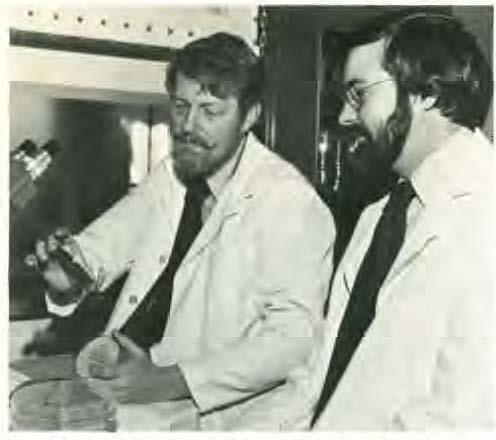
Another major research interest of Dr. Ben· son is the study of the organism, Salmonella. This is a pathogen t.hat has long been the plague of animals and humans. Interestingly, it was first discovered by a veterinarian, Dr. DarueJ E. Salmon, who was the first Chief of the Federal Bureau of Animal Industry. One problem in any study of Salmonella is that there are over 1,200 strains of t.he organism. WhiJe certain strains have been identified as the cause of the disease in animals known as salmone1Josis, it is possible that other, uniderr tified strains may also be involved. One of the objects of Dr. Ben11on's work will be to attempt to define mechanismsof pathogenesis. The particular strain now most commonly associated with colitis in horses is Salmonella typhimurium. The common clinical signs are hyperthennia, diarrhea, co.bcy pain, and occasionally a rapidly developing septicemia. One characteristic of equine salmonellosis is that it strikes horses that are in stressful situations, includjng transport, weaning, worming, or any other situation that lowers resistance. Surgery may predispose horses to salmonellosis, and one aspect of the work of Dra. Benson and Palmer is to examine horses post-surgically for the presence of Salmonella. Salmonellosis is highly contagious at the local level; it can become entrenc.�hed on a particular farm. Horses with salmonellosis at New Bolton Cen· ter are placed in isolation.
Dr. Benson states that some SalmoneUa strains have the capability of producing to.x.im. This is related to the genetic make-up of a particular organism. Honles with toxemia. associated with salmonellosis, have been observed at New &Lton Center, and the se.a.r.:h £or strains that produce this phenomena will be part of the Benson/Palmer study.

In the past ten years there has been an increase in the incidence of Salmonella infec· tions in both humans and animals. Recently there have been outbreaks of the disease in humans foJJowing t.he consumption of cooked beef. One problem in the spread of salmonellosis is the fact that most species, including humans, can act tLs carriers of the bacteria without exhibiting overt clinical signs. It is estimated that at least ten percent of the horse population are carriers of Salmonella.
Diagnosis of salmonellosis is based upon identification of or�anisms in fecal culture. This may he difficult in carrier animals, and Dr. Beru;on hopes to improve diagnostic methods.
A cooperative study in which Dr. Benson is involved witb Dr. Dyer, concerns the etiology of "shipping fever,. in cattle and horses. Dr. Benson is also conducting basic research on metaboli�pathways in Salmonella and other organisms. While he is relatively new to the faculty of the School of Veterinary Medicine, Dr. Benson has been at the University of Penn· sylvania since 1975, with the School of Allied Medical Professions. In addition to research he teaches in the core and elective portions of the veterinary curriculum, and is administrator of the clinical laboratory at New Bolton Center.
Epilepsy is one of the most common canine neurological complaints, yet control of seizures in dogs remains a difficult, frustrating, and often unrewarding task for veterinarian, owner, and patient. In an effort to remedy this situation. t••e Vetednary Hospital of the University of Pennsylvania has recently insti· tuted an epilepsy foundation for dogs called the Canine Epilepsy Service under the direc· torship of Or. George C. Farnbach, V.M.D., Ph.D., assi�tant professor of neurology. This canine epilepsy center has the ambitious goals of improving the control of seizures iu epileptic dogs and, if possible, eliminating seizures altogether through a cooperative effort involving pets, their owners, their locaJ veterinarians. and the facilities of the Canine Epilepsy Service (CES).
Dogs, like people, suffer from epilepsy of varying inten5ities and types. Like the physician, a veterinarian is generally forced to attempt to control epilepsy through the use of anticonvulsant drugs. The control of seizures in humans is tnore often successful than it is in dogs because considerably more information about the use and effectiveness of anticonvulsant drugs in humans is available to the physician. The process of controlling human �:�ei.zures has been considerably advanced by the study of large numbers of epileptic patients on a variety of treatment regimens, which was made possible by cen· tralized epilepsy study groups. These groups have deveJoped a wealth of knowledge about the efficacy of $pecHic drugs, the blood levels required to control seizures. and the toxic and long-term effects of these drugs. Modern technology now permi1s relatively inexpensive monitoring of serum drug leve]s, ena· bling the physician to adjust or switch anti· convulsants for maximum effect and minimum toxicity baAed on the knowledge of each drug and the individual patient's blood levels. No such body of knowledge exists in veterinary medicine, leaving the practitioner to determine the appropriate anticonvulsant for the patient on a limited and basically blind triaJ-and-error basis. This can be a costly and frustrating process.
"There are a variety of drugs and drug combinations which can be used in control protocols, yet accurate information about the effecti\•e and toxic blood levels of these drugs or about their long-term side effects in the dog does not exist,.. Farnbach explained. �At the CES we hope to collect this kind of information over u Lon� period of time. Our goal is to monitor at least 1,000 dogs for at least three yearM."
To illustrate the importance of drug information, F'arnbach cited Dilantin, a drug commonly used in both humans and dogs to control seizures. uln humans, DiJantin is effective in many patients, but to control seizures, blood levels above 10 ug/ml are required. An effective dose for an adult human is about 300 mg/day. We do not know
Dr. Charle11 Beruon (left) and Dr. Jon Palmer.
Bellweeher 6
Service
if Dilantin is effective in the dog, but we do know that the dog metaboli2les Dilantin about 10 times faster than humans. In over 100 serum diJantin assays sent in from epileptic dogs, none showed more Dilantin than 7.2 ug/ml and none of the dogs were controlled. Three hundred mg/day might he an effective dose for a small dog like a Chihua· bua, but a German Shepherd would need about 3,000 mg/day to reach 10 ug/ml in its blood. And we don't know yet whether that would be effective."

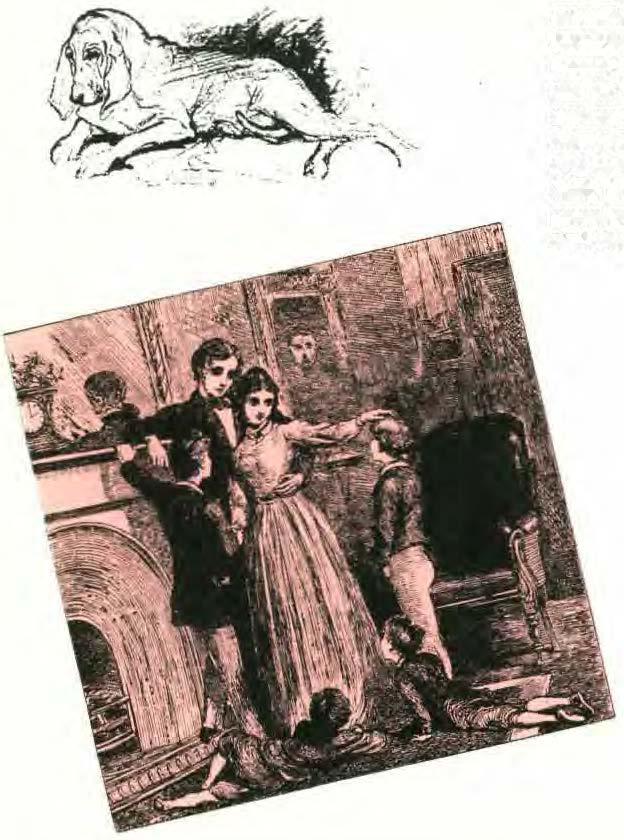
In humans, where effective blood levels of Dilantin are known and patient blood levels can be monitored, the daily dosage can easily be adjusted to fit the metabolic characteristics of each individual patient. If a human patient has adequate blood levels of Dilantin but continues to seizure, it becomes immediately clear that a new drug and not a new dose should be tried. The veterinarian however, without blood level measurements, must arbitnrily decide when to stop increasing dosages and change to or add different drugs. To improve the techniques in veterinary seizure control. the Epilepsy Service utilizes information collected from three sources: 1) the pet owner, 2) the local veterinarian, and 3) the routine monitoring of blood levels of anticonvulsant medications in epileptic animals.
A computer-based data management facility has been established to carefully record and monitor each patient. Initial informa· tion about each patient is recorded as their names are sent to the registry by the local veterinarian. Pet owners are sent explanatory litemture and forms to a·ecord the characteristics of each subsequent seizure. These forms are filled in as seizures occur and are mailed to the CES in order to monitor both frequency and severity of each pet•s seizure pattern. When an anticonvulsant drug protocol is started by the local veterinarian, the name of the drug or drugs and their dosages and blood samples are sent to the CES. The name and dosage of each drug and the cor· responding serum level is added to the data base for each individual patient. In this way, changes in seizure patterns (or Lack thereof) can be correlated with serum drug levels and dose patterns in hundreds of individual animals and the efficacy and toxicity of drug protocols can be evaluated.
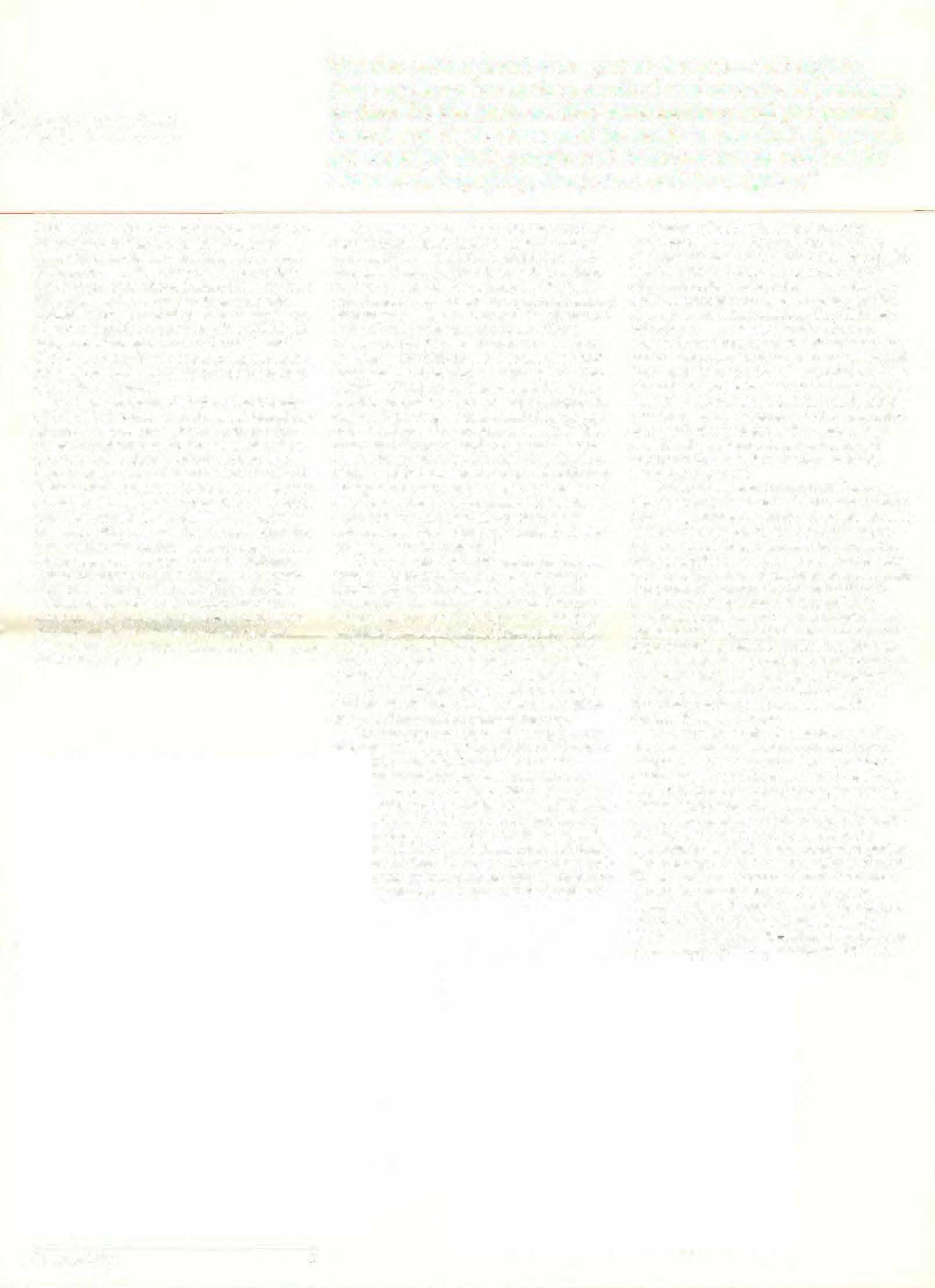
The computerized data management sys· tern has been developed by Dr. Farnbach specifically for the CES. Drug level mea· surements ue made nsing the EMIT system which has been validated for use with dog serum by the SYVA Co. of Palo Alto, CAin conjunction with the Canine Epilepsy Ser· vice. This system represents a technological advance which has proven advantageous in monitoring human anticon,·ulsant therapy and which will be cost-effective in monitoring veterinary anticonvulsant therapy.
''Computers and high technology are not the answer," Farnbach emphasized...What is needed is a massive cooperative effort between animal lovers, veterinarians and research workers. Anyone with a loved onepet or human-that suffers from epilepsy has serious medical and emotional problems to face. In the past, we (the veterinarians and pet owners) have faced them alone and basically in the dark. If we can get together both people and information we will not be alone and, hopefully, the future will be brighter."
Owners of epileptic dogs are a very important part of the program. They not only provide the veterinarian with the initial information but they also provide the CES with continuing information about the dog and its improvement or the nature and fre· quency of recurring seizures. The CES provides mote than record keeping for the owner. It provides support and information and answers questions on both an individual basis and through a Newsletter which will he published shortly. In this way owners can see that they are not alone and that their pet's pTOblems are not unique. Further, the questions and observations of the owners may provide clues about seizure patterns and triggers wtllch may have been previously missed and ignored.
Participating veterinarians.also play an obviously important role. Their observations regarding efficacy, toxicity and long·term side effects are essential to the development of more rational drug protocols. In return for their participation, veterinarians receive sev· eral benefits: serum drug leve] measurements are provided inexpensively; each animaPs seizure and drug history is immediately avaHable by computer for consultation with the staff of CES, if they desire; and new con· cepts regarding seizure control are dissemi· nated as soon as thev are extracted from the collected re<'.orda of all dogs in the program. A Veterinary Newsletter is also being published for professional members of the Canine Epilepsy Service.
The services of the Canine Epilepsy Service are available to aiJ pet owners free of charge. Veterinarians are asked to make a small annual contribution to cover the costs of publications and computer maintenance. Serum drug level measurements are provided at cost for member veterinarians. The medi· cal data (but not the personal data) are available to any legitimate research organization wishing to use them in medical research. Those interested in more detailed information or in. contributing to the program should contact George C. Farnbach, V.M.D., Ph.D., Director, Canine Epilepsy Service, School of Veterinary Medicine, University of Pennsylvania, 3800 Spruce Street, Philadelphia, Pa. 19104.
Summer 1982 7
��nyone with a loved one-pet or human-that suffers from epilepsy has serious medical and emotional problems to face. Ira the past, we (the reterinarian and pet owners) hat'e faced thern alone and basically in the dark. If we can get together both people and information we tvill not be alone and� hopefully, the future will be brighter."
•..J •••� .Ill'• '• \••tr..,. ..�••'-"' ... 1�··, '·
Cat Behavior: Facts and Myths
Cats have been companion animals for thou· sands of years. Ancient Egyptians held them sacred and protected them by law. Through· out history people in many parts of the world have valued them for companionship and their ability to control rodent pests. Cats figured in fairy tales, and in modern times have inspired cartoons and many hooks. Today, cats, ranging in size and color from the domestic shorthair to the exotic Persian, rank among the most popular pets in American households.
Despite the popularity of cats there are many misconceptions about them. They are thought of as aloof� independent, and not affectionate. Nothing could he further from the truth, according to Victoria L. Voith, D.V.M., director of the Animal Behavior Clinic at the Schoo) of Veterinary Medicine, University of Pennsylvania. "Cats are affec· tionate, they greet their owners and follow them around. Some cats are so attached to their owners that they wilJ delay parturition until the owner is present."
Some cats are affected by stress and suffer so severely that they will pull out large portions of their fur. To treat them, the behaviorist prescribes antidepressant or antianx· iety drugs. Together with the owner, it is explored how the stressful situation can he identified and eliminated. If that is not possible, the cat is kept on drugs for a prolonged period to help it adjust.
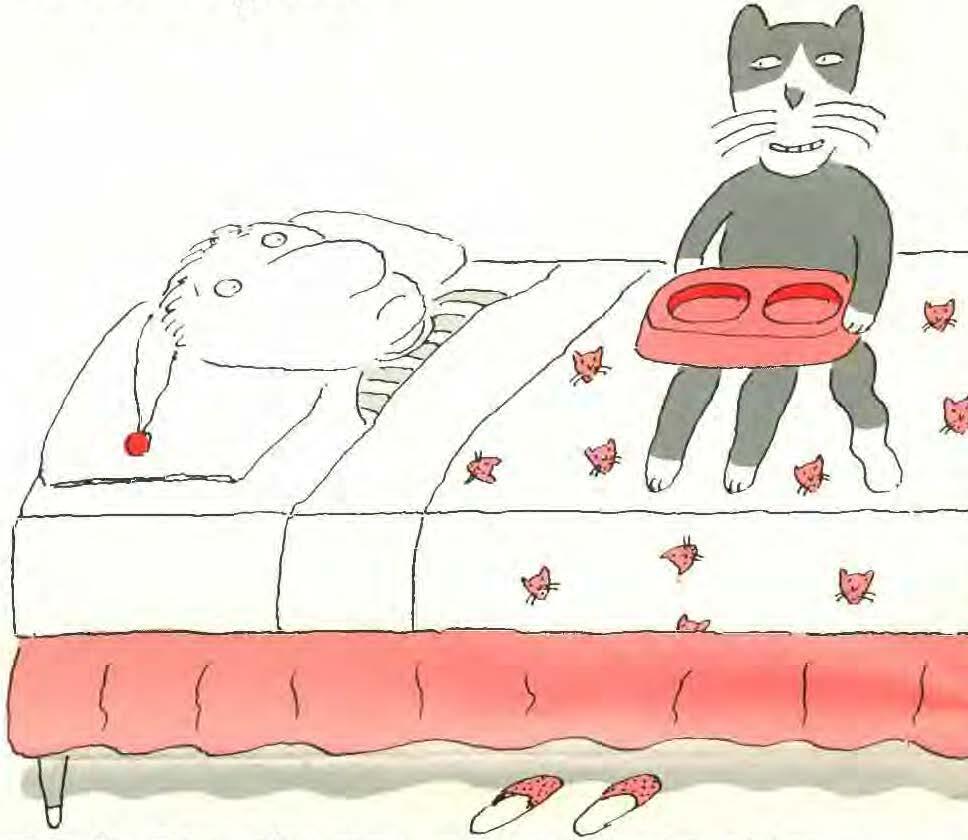
Stress was thought to play a role in the occurence of urinary blockage in cats. Dr. Voith and Debbie Ganster, research assistant, department of psychology, University of Pennsylvania, conducted a limited survey among fifty-three cat owners. The stress hypothesis was not confirmed, hut they uncovered �;ome rather interesting factH about the interaction of cat owners and their pets. Additional questionnaires have heen distributed to obtain a broader, more definite sample.
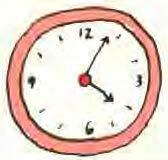
In the preliminary study, the researchers found that 98 percent of the respondents considered the cat a family member, 36 per· cent thought of it as a child member, and 64 percent saw it as an animal member. They also found that 34 percent of the owners celebrated their eat's birthday, that 96 percent thought that they were aware of the eat's moods, and 92 percent thought that the cat was aware of their moods. All respondents talked to the cat, 51 percent as though it were a child, 49 percent as though it were a pet, and 25 percent at times talked to the cat as though it were an adult. A large percent· age shared tahle and snack foods with the cat, and a number of owners attributed guarding instincts to their cats, describing them as ••watch cats."
Cats are an important part of the daily lives of many people, they provide compan· ionship not only to those living alone hut also to families with children. The hehav· ioral clinic helps these owners to correct problems which may threaten the human/

animal relationship. '"It is a small investment when one considers that in most cases the problem can he solved and the cat be retained as a pet and family member," Dr. Voith explained.
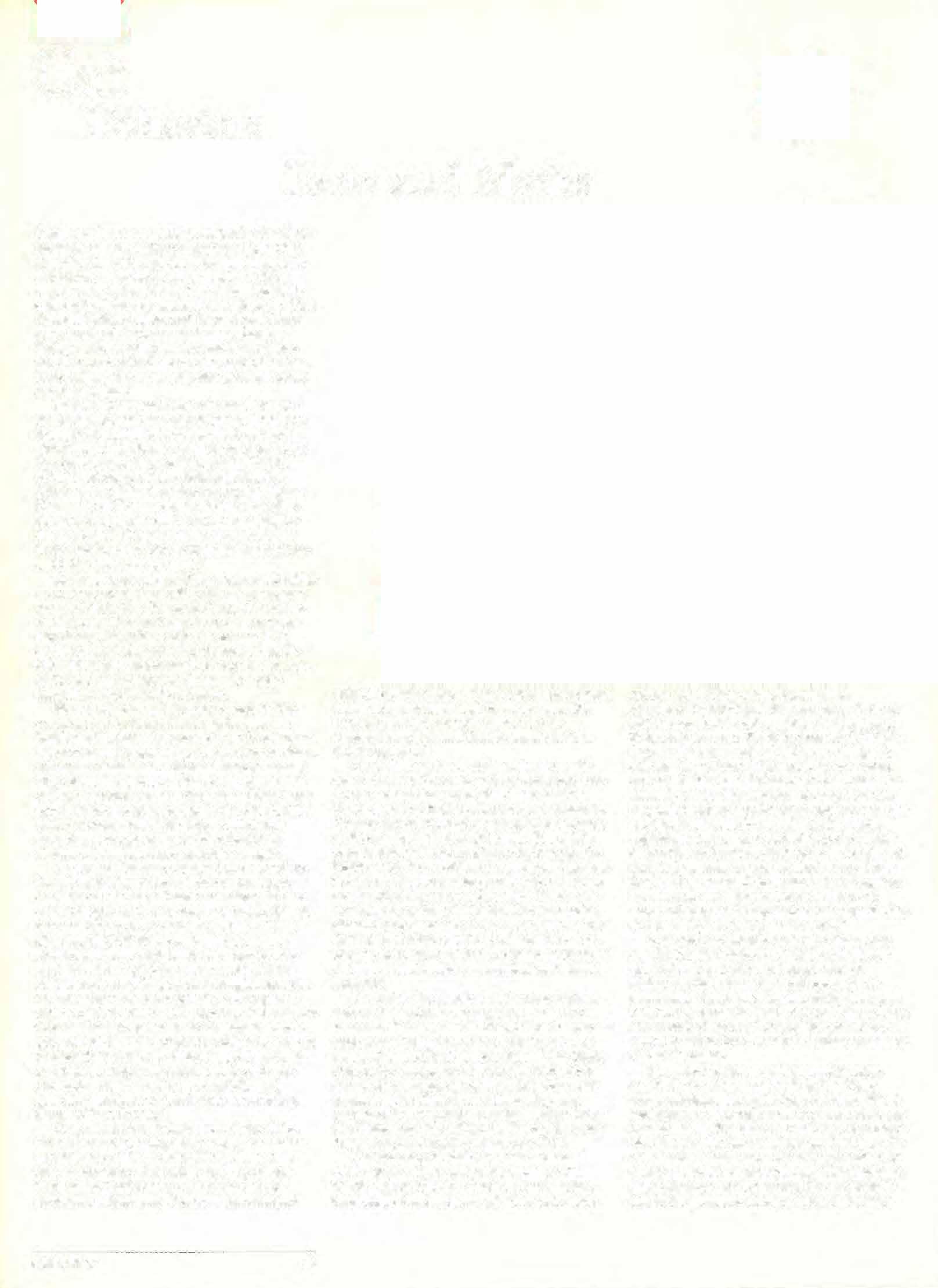
Commltation for a cat problem usually takes from one hour to ninety minutes. The owner brings the cat to the clinic and Dr. Voith observes it and discusses the problem. Owners are advised of a course of treatment and training to follow at home. The clinic visit is followed up by phone calls from Dr. Voith until the problem is resolved. The cost for a one hour consultation is $40 and cases are handled by reservation only. These can be made by calling 243-4525. Cats comprise about thirty percent of the cases seen at the Animal Behavior Clinic. Dr. Voith has been able to help most of them, restoring them to a loved, affectionate companion and family member.
Dr. Voith has studied and written about animal behavior for many years, and her doctoral dissertation dealt with the maternal and sexual behavior of the female cat. She received her D.V.M. degree from Ohio State University and came to Penn in 1978 after completing studies in animal behavior and psychology at Ohio State University, and post·doctoral research in animal behavior at the University of California, Davis. She sees dogs, cats, and other pets at the clinic.
Another myth, that cats are antisocial with other cats, is also discounted by Dr. Voith. "Most cats are social in households, they enjoy the company of other cats, they
groom each other and eat and sleep together." Sometimes, though, there is a cat which may fight with another in the group. It is then that Dr. Voith is comulted. "Fighting can be the result of different things. A cat may have been ft·ightened by the other cat and fights as a defense." In this case, the animal can be desensitized through a train· ing and counter-conditioning process and the problem can usually he solved. Dr. Voith explained that a cat which fights as a result of territorial instincts is harder to treat, and that it is usually better to find a new home for it. "'It is normal for some cats to want to be the only one [in the house]. They are more solitary and they make fine pets if they are the only cat in the household."
Cats are inteJligent and, like dogs, they can he taught tricks. Dr. Voith told of one cat which was trained to jump over an object, shake hands, and roll over, all on command. The owner took a little time and had the patience to teach the cat by applying the standard method of positive reinforce· ment by using food rewards during each step of the training.
Standard training and reconditioning methods are also employed by Dr. Voith when solving a cat .behavior problem. "Most problems are chronic, and the most common complaint is that the cat won't use the litter· box. This behavior develops gradually as the cat shows a preference for a new location or a new substrate to scratch on.'' The undesirable behavior can be caused by a change in the litter product, though often the causes
Bellwether 8
( f j
are not known to the owner or the behavior· ist. However, the problem can still be solved by identifying the factors that are maintain· i..n� lhe behavior. The owner is usuaUy advised to cover the surface with pla.stic or foll and to move a litterhox nearby. When the cat finds its favorite scratching surface inaccessible, it will use the litterbox. Gradu· aUy the box is moved hack to the desired location. Food and toys placed in the previous area further discourage its use as a litterbox.
Some clients consult the clinic because they believe their cat is aggressive toward people. This is frequently a case of misunderstanding between the feline and the human. ''These cases usually turn out to he cats who play too roughly," Dr. Voith stated. ..They may scratch or bite the owner who interprets the behavior as aggrei:!Rion." Dr. Voith explains to owner�:� how to redirect the eat's play to objects such as moving toys which can be pounced upon.
Another frequently-heard complaint is that cats awaken their owners earlier and earlier each day. Dr. VoHh explained that usually these owners, unwittingly, have con· ditioned the cats to expect food t.he moment the owner gets out of bed. "The first thing they do every morning is feed the cat. Treatment is simple. Ignore the cat when getting up, feed it Later in the day and change the schedule. In a short time the cat will no longer a!lsociate getting up in the morning with being fed."

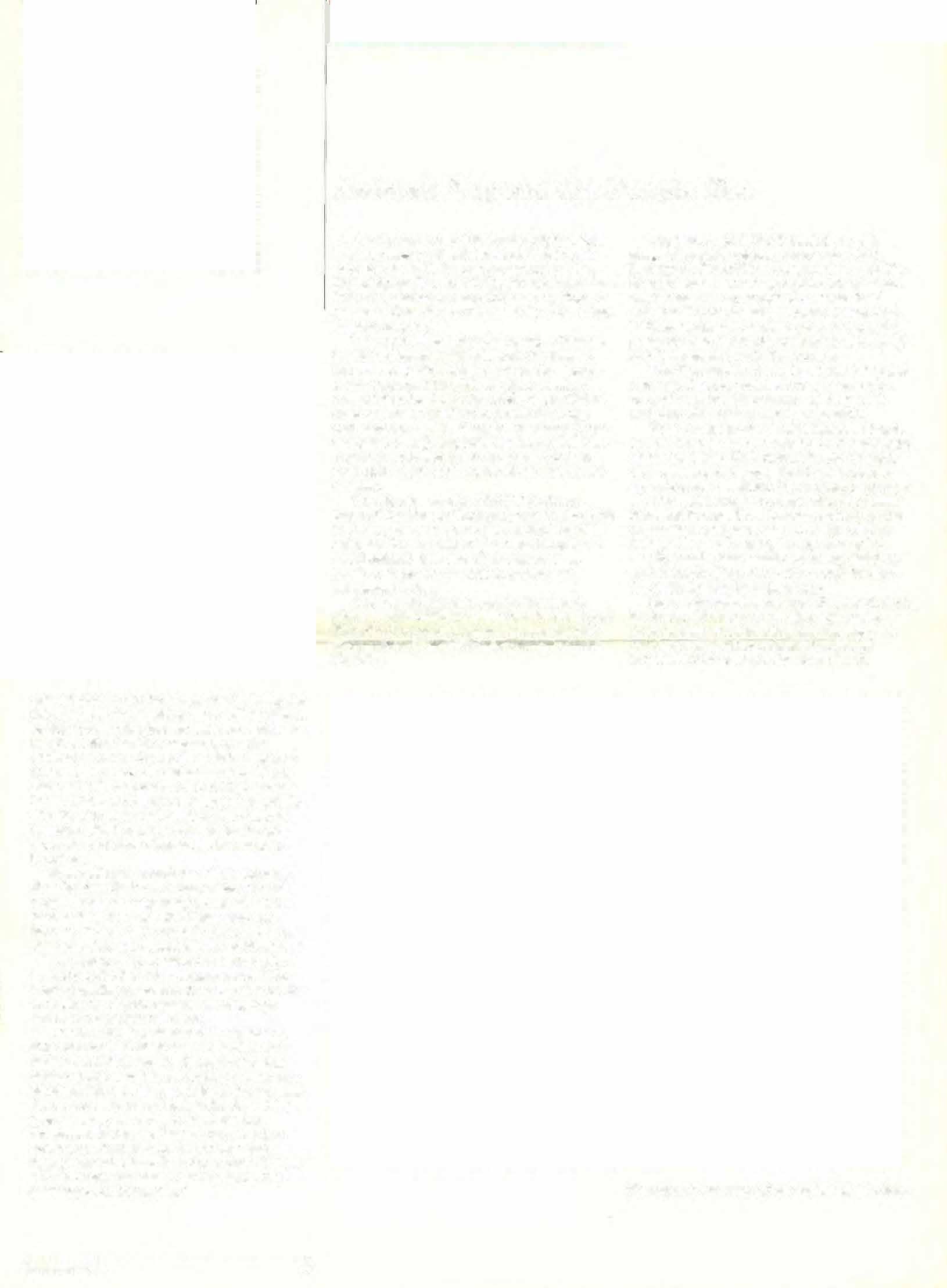
Animals Depend On People Too
Tom, a fennec fox at The Philadelphia Zoo, is a very lucky animal. Born at The Frankford Zoo in 1977, he was presented to The Philadelphia Zoo in 1978 by Frank Palumbo. Palumbo christened the African fox, Tom, in honor of Tom Fox, a columnist f01· The Philadelphia Inquirer.

This past March the University's Communications Department adopted the fennec fox. For only fifty dollars a year the department supplies him with his daily meals of canned dog food, a baby chick, a handful of meal worms or crickets, a hardboiled egg, and perhaps a sJice of apple or banana. Tom has quite a large appetite for an animal who measures only sixteen to 11eventeen inches long and weighs just under three and a half pounds.
The Zoo hegan the ADOPT (Animals Depend On People Too) program in late 1978 to defray the euormous cost of feeding 1800 animals. Tom's meal might seem large for a small animal, but one tiger consumes as much as fourteen to sixteen pounds of horsemeat a day!
Ann Novak, the program's director, is pleased with ADOPT's progress. In fiscal year 1981, the Zoo netted approximately $60,000 in donations. The "198Z tally reached almost SIOO,OOO.
Supporters of ADOPT include a wide range of people: school classrooms. Todd Rundgren, SmithKline Corporation, and Mrs. George Bush. According to Mrs. Novak "parents" become very attached to their "zoo children." Animals often receive letters and holiday cards. One woman even composed a poem for her aardvark, coruistin� entirely of words beginning with the letter a.
The Communications Department bas not attempted poetry yet. But they have a pic· ture of Tom hanging on one of their walls and they visit him as much as possible.
Tom's home is the SmaU Mammal House. At one time he was on display in the rotunda of the building. Unfortunately, the rotunda area echoes greatly and Tom's Rix inch ears are extremely sensitive. Once when a number of school children were explorinJ!; the Small Mammal House, Tom became excited by the commotion and jumped out of his African habitat. Senior Keeper, George Konopka. finally caught him amid screaming children and teachers. Ever since this escapade Tom has been housed in a glass cage.
Soon a female fenoec fox will join Tom in his house. If all goes well they will mate. Anyone interested in adopting the new fennee fox or any other animal should dial B-A-B-0-0-N-S and ask for Mrs. Novak.
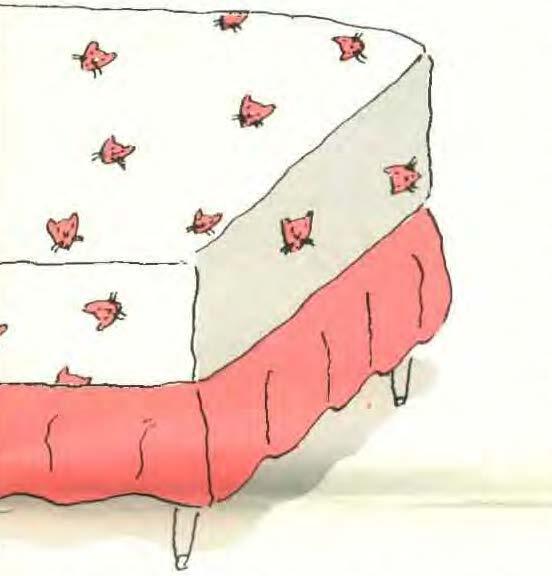
Summer 1982 9 ANIMAL PROFILE
Photograph courtesy of the Philadelphia Zoo
Veterinary Mediclneas a Career


There are twenty-six Veterinary Schools in the United States, four of these have not yet graduated their first class. There are between nine and ten thousand students enrolled and about one-third of these are women. It has been estimated that only about 25% of the qualified applicants are admitted each year. There has been a marked increase in the number of schools and students in response to a shortage of veterinarians. There are indications that this could result in a surplus in the next decade or so, but expanding opportunities in the field may change this outlook.
faults which make it ineligible to win. Many novice owners do not know this and are embarrassed when the judge excuses their entry from the ring.
Each breed has a standard and any disqualifications are listed. In many breeds of cats, faults which are not allowed are kinked tails and incorrect number of toes: five in front and four in back is correct. In dogs, some breed standards have definite upper and lower limits of height and weight. require specific colors, do not allow over- or under-shot bite. have rules about ear carriage (some may not be held erect and others may not droop) and disqualify vicious dogs. A Newfoundland must have webbing between the toes, a Briard must have dewclaws, but dewclaws on the hind legs disqualify a Kerry Blue Terrier. All of these. except viciousness. would not prevent the animal from being an excellent pet.
and the anatomic peculiarities of the brachiocephalic breeds (Bulldogs, Pugs, etc.) The most important first aid measure is to lower the body temperature as quickly as possible. This can be done by cooling the animal with a garden hose or a tub of cold water, or by packing it with ice. The Quicker the body temperature is reduced, the better the chance of avoiding permanent injury.
Prevention requires a well-ventilated crate while travelling in hot weather. lee bags may help make the short-nosed breeds more comfortable. If excessive panting is noted, do not force the animal to exercise-keep it as quiet as possible. Offer water frequently. There is some question about lhe value of salt tablets for dogs. If they are eating a normal diet and drinking adequate water. it probably does not help to give extra salt.
alDogs kept in air-conditioned homes and kennels seem to have a decreased tolerance to heat when out in the sun. Do not expect them to be as active in very hot weather and exercise them in the cooler part of the day.
Remember that chronic heart disease predis· poses to heat stroke. Very young and old animals also need extra attention in very hot weather. The signs of heat stroke are staggering, collapse, and even unconsciousness. Be prepared to act promptly,
Crackers
Over 30.000 veterinarians in the United States are working in private practice, teaching and research, regulatory work, military service, public health, and other professional activities. Veterinarians may specialize in a number of different fields such as internal medicine. radiology, dermatology. reproduction. ophthalmology, cardiology, surgery. neurology, microbiology, pathology, aquatic animal medicine, avian medicine, zoo animal medicine. orthopedics. and others. Actually about 75% of the veterinarians are in private practice and half of these treat only small animals (dogs and cats). There. are some practices limited to large animals (horses, cattle, and other farm animals) and the "mixed" practice which Includes both small and large animals. There are some individuals specializing in cats and a few with practices limited to birds.
Admission to a veterinary school requires at least three years of college work, although four years may be needed to complete the reQuired courses. Any one who plans to apply for admission to a professional school should check with that school to be sure the proper pre-veterinary courses are taken.
Veterinarians are reQuired to pass state board examinations before they will be licensed to practice. Internships are not required but are available for a limited number of graduates. The University of Pennsylvania grants a V.M.O. degree, while the graduates of other schools are D.V.M.'s.
The Veterinarians's Oath. in part, states ··1 solemnly swear to use my scientific knowledge and skills for the benefit of society through ths protection of animal health, the relief of animal suffering, the conservation of livestock resources, the promotion of animal health, and the advancement of medical knowledge.'' This is the spirit of veterinary medicine.

Disqualifications
There are times when an owner tries to make his or her pet into a shaw animal This usually happens when some well-meaning friend says, 'That's such a beautiful animal. it could be winning prizes." A little investigation is wise before proceeding.
Even though a dog or cat may be registered and eligible for entry in shows. there are disqualifying
If you want to show your dog or cat, attend a few shows as a spectator and talk with those who are exhibiting your breed. Study the specific requirements for your breed. A Dog or Cat Show where championship points are given is not a Pet Show, although many of the contestants may be part of a household. Their purpose is improvement of the breed. There are too many animals shown which are poor examples of their breed but Qualify under their breed standards. However. you must be sure your animal conforms to the standards before it is shown.
"Hot Spots"
A "hot spot" is the commonly used description of a reddened, moist area on the skin which seems to appear overnight. It is a particularly annoying problem in show dogs.
An irritant causes the dog to scratch, resulting in an open sore. The treatment, of course. is to remove the source of itching and "dry up" the sore spot before it becomes infected.
There are dozens of remedies for local application. All seem to have some value if used promptly. Preparations containing steroids are good anti· inflammatory agents. Recently, much publicity has been given to DMSO (Dimethyl sulfoxide). This has potent anti-inflammatory as well as bacteriostatic qualities. However. it can be irritating and may cause scaling skin. Use it with caution. it is advisable to use only FDA-approved products.
Fleas probably are the most important cause of "hot spots" but anything that makes the dog scratch may result in skin lesions. The best treatment is to remove the cause of the scratching. This often is easier said than done.
If your home remedy does not produce results quickly, consult your veterinarian. The longer the condition persists without correct diagnosis and treatment, the more difficult it will be to control.
Hot Weather Precautions
Heat Stroke occurs most frequently when dogs are confined without sufficient ventilation in hot weather. An automobile with the windows closed can become a deathtrap in just a few minutes. Excitement and forced exercise in hot. humid weather may result In heat stroke. Other contributing factors are lack of available water. obesity,
Dogs and cats can swim, but should be watched when in the water. Panic or exhaustion can result in drowning. Swimming pools should be fenced.
The Pet Bird Handbook by Patricia Sutherland (Arco Publishmg, Inc New York) provides useful mformation for bird owners as well as those considering a bird as a pet. It gives an important warning; if a bird is wanted for decor. it sttould be ceramic. Bird ownership is as serious a responsibility as dog or cat ownership and obtaining a bird should not be a casual decision.
Various species of birds are described, including canaries, finches, pigeons, budgies, lovebirds� cockatiels, and parrots. The book's prescribed diets are excellent with the exception of the parrot diet. Our experts feel parrots require half the basic seed mix and half what the book lists as extras, such as sour� ces of protein.
First aid is also covered. Signs of trouble are runny or blocked nostrils. frequent sneezing, diarrhea. sudden loss of weight. disinterest in food. difficulty in breathing, wheezing, or sores. The most important first aid measure is warming the bird. Use a low wattage light bulb or a heating pad to raise the temperature to 90°F. but not higher than 95°F. Immediately call your veterinarian for advice and treatment. In addition to heat. encourage the bird to eat: peanut butter, oranges. or honey and water from a dropper. Avoid antibiotics.
Taming programs are given in detail. The basics are proper management. ''bird sense," routine. and patience. An important requirement is daily freedom. For small birds this means flight in a designated space, for large birds (parrots) daily removal from the confinement of the cage. A consistent, systematic. daily routine Is essential. A bird can learn to leave and enter its cag3 in addition to becoming hand-trained. Window screens are imperative-if a bird escapes, the chances of retrieving it are poor. Problems with tame birds include biting and noise. However, the tamed bird can give much pleasure. Parrots oMen outlive their owners and many small birds live ten years. The book can prepare you and also help you decide if you really want a bird as part of your family.
• 1
Bellwether 10
Veterinary Economics
(contit�ueclfrom cot•er) ever before, the empha�is is on disease prevention and health maintenance at whatever cost. Along with medical research, the key to pre· vention may mean a complete upheaval of the traditionnl methods of raising food production animals. "Factory falming," a term applied to modern farming machinations, is a concept that is Leing ::�imultuneou�ly praised and vehemenlly opposed.
Growing up on a Maryland poultry farm where the eggs rolled off the as!'embly line, Dr. Fetrow i!j a dispassionate defender of cost· effective farming methods. On factory farms animals ha,·e re�>tricted freedom. are raised in close confinement, often indoors under artificaU\' controlled environment�;. It is an issue tha� h� also e poubed an animal rights cause.
Bellwether Award
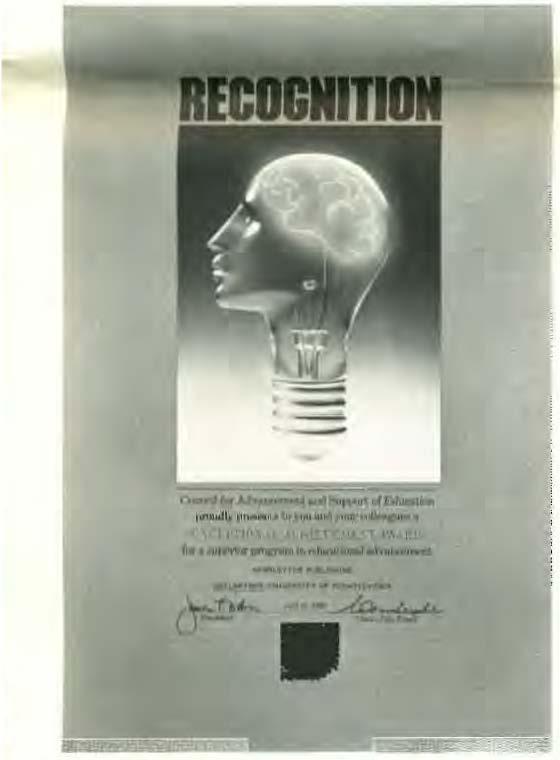
'"There is no question that factory farming is the way for individual farmers to turn, not only as a more efficient and cost-effective means ol' ruitling food unimals, but as the most efficient vehicle for feeding people in the long run," Fetrow contt!Oded. ••There is too much romanticie;m · an idyJlic view of farm animals grazing in green pastures. It is a view we can no longer afford in light of a declining farm population. Ultimately, animal rights must be weighed against hurnao right!! and our obliga· tion to feed pc�>ple in the world. "\('e can only do thi� through the most ef£icient system of producing food for the market."
Dr. Fetrow, who is also the veterinarian for a local swine farrowing facility where the sows and piglet� are kept in farrowing crates which don't perm•t the t�ow tl> roll over. maintains such facilitie!i aC"tually contribute to healthier animals. '"The so-called inhun1anity claim is not the fault of the production system, rather, it lies with the consumers who demand anemic white pork for their dinner. The pork pro· ducer is caught in the middle of satisfying a demand for the product. It's the individual you have to re-educate,"' said Dr. Fetrow, who added that he is, however, opposed to condi· tions tha·t are Rtressful and destructh·e to the animal!i. an effect that is counter-productive.
Production ul New Bolton Center is another art.�tl of concern to Or. Fetrow, who said that the hul'in�M operations of the large animal fadlity have been done in the ..green e>e!>hade �orld" too long. Soon the business operations will go ..on line" as computers a sume the task!:> of billing, accounting, medical and laboratorr records maintenance, and other business function�o. ·'We were fortunate to find a donor to fund ew Bolton Center's �1ep into the computer age." he said I've Leen pushing for computers here for years. but money was a factor."' The next step involved t�electing the appropriate computer system to handle the diver1:1e fUtwtions at New Bolton Center. Or. Fetrow said he stumbled on a company that developed a computer lan· guage called "Metalilc," that allows for great user capability. He is i11 the process of implementing a word processing system and hopes to eotabli!'h nn intelligent computer users net· work in the near future. ·•word processing will save repetition E&nd eliminate a lot of dmdgery for the se�.:retaries,'' he said. '"1t will have a tremendous impa�.:t on teaching and research reportF. A paper that requires a paragraph change v.on't have to he completely retyped. It will also help u write better grant proposals.�


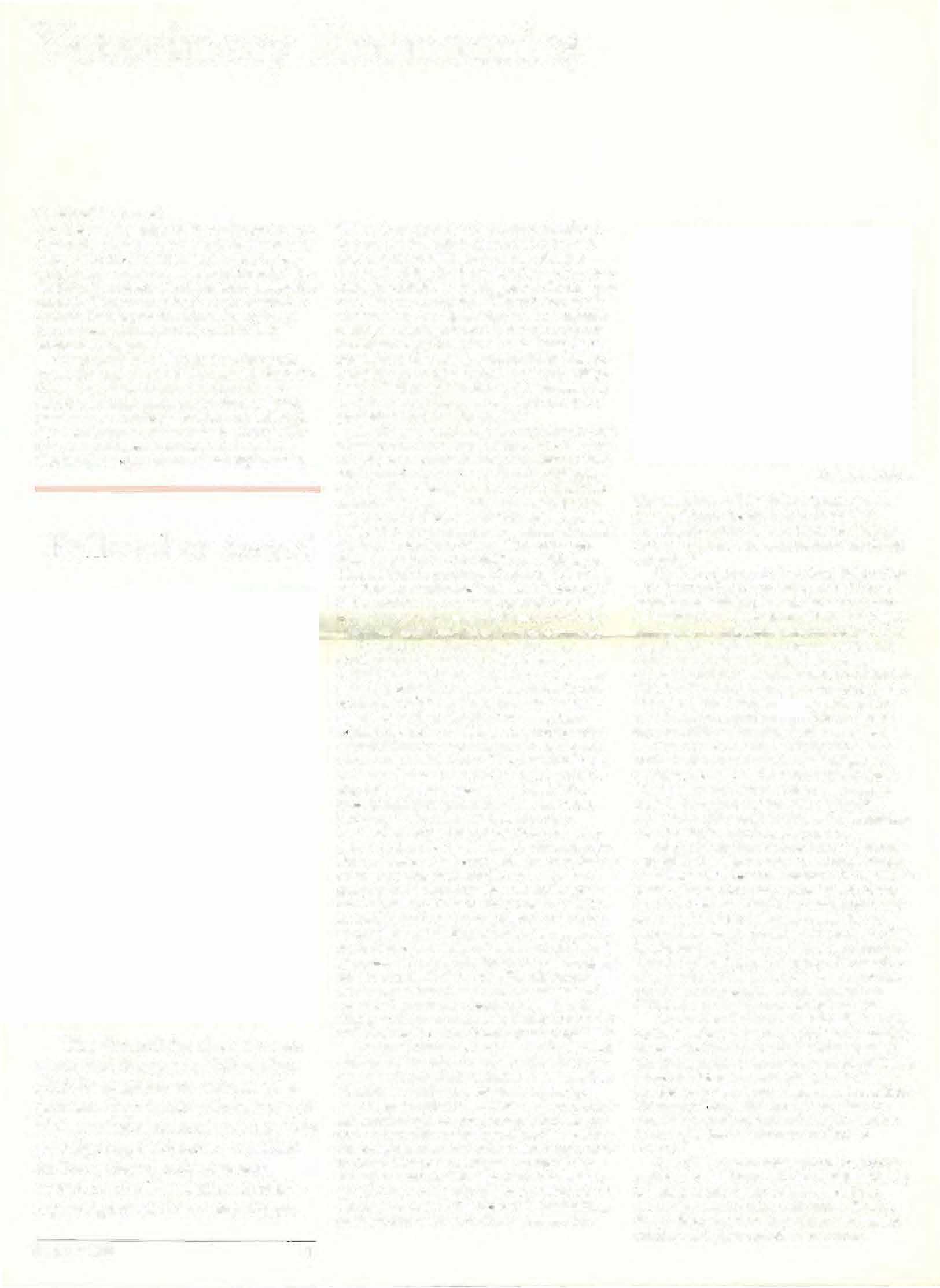
The Council for the Advance· ment and Support of Education (CASE) sponsors an annual com· petition that involves hundreds of higher education institutions. This past Spring, Bellwether received an Exceptional Achievement Award in the Newsletter Publish· ing category of this competition.
Computerizing the hu�>iness of the hospital v.iU streamline the various functions that are now laboriously done by hand. Function;o like admitision!!, discharges, clinician follow-up, pharmaL·y, pending laboratory work, and other information will be programmed into the system and pro\'idc a printout of pertinent data for evel")' clinician and others who have a need to know. Medical recorJ.�:� can he stored for call-up as needed. "My objective io to build a system tl'lllt 1.1 relatively computer-naive person can use," cxplalned Dt·. Fe1row. "'Eventually, students will work with the computers too.
The machines wiU be able to ·speak to one another.' from the front desk to medical records, for example," he added. "Instead of feet and fingers, we'll communicate via flying efectrons."
Dr. Fetrow hopes to have New Bolton Cen· ter's business functionH computerized in six months and wlJI implement the system that will utilize four desk-top terminals. Word pro· cessing is currently being introduced and it is hoped that it will be functioning on its own within two month.". Noting tbat medical records is the most complex task. he estimates that it wilt take at least a year to computerize this operation. Aside from ew Bolton Center's businel:l!> operation , Dr. Fetrow forsees the possibility of keeping herd records for farmers and e,·en computerizing the client"s entire busin�S!! operation, which might, for instance. be kept in the veterinarian's office. "Computers are a wa\e of the future that I want to be a part of." he said, adding that computers wiJI greatly facilitate the practicing veterinarian's record-keeping as well.

At the Massachusetts In!'titute of Techno]. ogy (MIT) Or. Fetrow carried a double major ill biology and CcrnHJn literature. He spent his junior year in Germany reviewing his career optionR. After working fol," a veterinarian one summer, he decided that he would like to pursue a career in the field. He received a B.S. in biology in 1973, then entered the School o[ Veterinary Medicine, University of Pcnnsylvani� earning a V.M.D. in 1977. Dr. Fetrow balanced out his technical education with an M.B.A. from the Whttrton School in 1981.
On the New Bolton Center faculty for five ye.ars, Dr. Fetrow, 30. i'i the youngest person to receive the ortJcn Award for Distinguished Teaching, an honor he is ..very proud of." Soon there will Le two veterinerians in the family. Dr. Fe1row'11 wife, Susan Crane, graduates from Veterinary chool this spring and plans to establish a small �tnimal and equine practice. The couple live in Westtown in Chester County.
All a field service veterinarian, Dr. Fetrow makes a Lot of "huut-�e caUs;' so catching up on lost sleep is one of hjs at-home priorities, along with conversation with Susan. He also docs a little woodworking, some non-medical reading, and plays squaRh once a week.
Summer 1982 11
Dr. John Fetrow
98 Down 2 to Go!
Although the first class that graduated from the Veterinary Department had only ten members. these new veterinarians represented an important contribution to the welfare of the country. At this time the United States was suffering great losses due to animal disease and there were few trained veterinarians to cope with the problem.
Considering most of the students in the first class had little formal education. the completion of the three-year veterinary course must have represented a real milestone. The fact that the School itself not only survived but began to grow almost immediately was also highly significant. since a number of previous attempts to establish veterinary schools had failed because of a lack of students. By 1888-89 the total enrollment in the Veterinary Department had reached seventy-eight and by 1909 it had grown to 150 students. Tuition remained at $100 per year for the first twenty-five years but there was a move on the part of the University to raise it in 1908. In October of that year Provost Charles C Harrison wrote a memorandum to Dean leonard Pearson inquiring as to whether "the time has fairly come when we can announce an increase in the tuition fee to $150." Dr. Pearson's reply is preserved in the form of a note he penned on an envelope to the effect that "we should prefer to reduce tuition to $75" and that "ultimately tuition should be free." So much 1or the state of the economy in 1908!
Like the student body, the faculty grew. In 1884. the original faculty had thirteen members and by 1909 it had grown to twenty-four. There was a gradual increase in faculty having veterinary degrees but there remained a strong representation from the Medical School and other University departments. One trend that was established early was the inbreeding of the faculty. Most of the new appointments were graduates of the School, and this rather unhealthy state of affairs continued until the 1950s.
During the first twenty-five years there were three deans: Rush Shippen Huidekoper. M.O., V.S. (1684-89), John Marshall. M.D , Nat. Sc. D. (1890-97) and Leonard Pearson, B.S., V.M.D. (1898-1909). Or. Huidekoper provided the leadership and enthusiasm needed by the new department in its infancy; Or. Marshall was a good adminstrator. but essentially a caretaker; Or. Pearson provided the vision and the prestige needed to point the School to future greatness.

In 1885 a large animal hospital was adde<l to the original building of the Veterinary Department which stood at 36th and Pine Streets. In 1882 a small animal section was attached to the hospital, the first of its kind in the country. From the outset there were sufficient cases for the hospital to fulfill its teaching function. During the first three decades of the School's existence there were many farms in the Philadelphia environs so that transportation of farm animals to the hospital was no problem. Also, the horse still provided most of the transportation power. In 1886, a total of 352 cases were seen in the hospital; by 1901 this had increased to 4,755. The hospital fees were somewhat less than today! The charge for hospitalizing animals was: horses and mules, $1.00/day; donkeys and dogs, 50 cents:
and cows. sheep, pigs, cats, and birds, 25 cents. Prior to 1891 the clinicians were paid directly by the client. but after this time a free clinic was established.
During these early years there was little money available to suppor1 research. Through the efforts of Dr. Leonard Pearson. some funds were obtained from the Pennsylvania Department or Agriculture and there was some research on forage poisoning, osteoporosis, and foot and mouth disease. Dr. Pearson himself conducted the first practical tuberculin test in America when he tested a large herd of Jersey cattle belonging to Mr. Joseph Gillingham, president of the Board of Managers of the Veterinary Hospital. At about the same time. Or. Pearson introduced the use of mallein for the diagnosis of glanders in horses.

In 1901 the Veterinary Department received what could have been a mortal blow. except for the loyal persistence of faculty and students. At this time the University Trustees decided that the site occupied by the Veterinary Department was needed for expansion of medical facilities. Consequently, the original building of the Veterinary Department was demolished and the Department was moved to an old two-story structure located on Woodland Avenue between 38th and 39th Streets. This building had been used previously as a car barn and it was almost totally unsuitable for a veterinary school. Actually, when this move was made it was believed that the School would be in these quarters for only two years. As it turned out, a new building was not ready until 1907, and the car barn location became rather bitterly known as the "temporary-permanent" quarters.
Despite the hardships of functioning in the car barn building, the Schoo! held on and enrollment increased along with the hospital census. Finally, in 1907 the first portion of the quadrangle building was ready tor occupancy and by 1913 this structure was complete. This would be the home of the Veterinary School for over forty years.
With the graduation of the class of 1908, there were 395 alumni o1 the Veterinary Department of the University of Pennsylvania. Most of the graduates went into practice and made important contributions to the health of the country's growing livestock population. Some early graduates became leaders in other areas of professional work. Or. John R. Mohler (V '96} became Chief of the Federal Bureau of Animal Industry and Dr. T. Edward Munce (V '04} became State Veterinarian for Pennsylvania. Dr. George Hart (V '03) went west to the University of California where he built up an outstanding career in nutrition. physiology. and reproduction, and eventually became dean of the Veterinary School. Dr. John H. McNeil (V' 08) was dean of the College of Veterinary Medicine. Iowa State University from 1902 until 1909. Three other graduates during the first quarter century became deans of the Veterinary School of the University of Pennsylvania: leonard Pearson (V '90), Louis A. Klein (V '97), and George A. Dick (V '04}.
In 1909 the School received one more shattering blow. with the death of its energetic, young dean. Dr. leonard Pearson. He had become dean in 1898 and in his few years in office he had accomplished some amazing things. Dr. Pearson was a national figure in the young veterinary profession and this. along with his being State Veterinarian for Pennsylvania and president of the A.V.M.A., brought the School the prestige it so badly needed in its early years. Dean Pearson was the architect of the quadrangle building and had excellent connections in the state government and in leading agricultural societies. It is reasonable to believe that if Dr. leonard Pearson had lived, the School, now housed in a new building, would have entered a period of prosperity. Instead. the important beginnings made by Or. Pearson were allowed to languish and for the next four decades there was little growth.
Good Times and Bad Times: The First Twenty-Five Years
Bellwether 12
Dr. 1-f'mrurd Pearson
August
September
14 1
Academy of Natural Sophomores. Juniors. Sciences of Philadelphia. Seniors begin classes Tour. New Bolton Center 2
22 Freshman begin ctasses
Class of '77 Reunion. New Bolton Center
University of Ibadan
Thisspring the Schoo] of Veterinary Medicine hostedProfessor 0. 0. Dipeo}u, dean of faculty of veterinary medicine at the University of lbadan,Nigeria. Professor Dipeolu met with the dean and with department heads to diF.Icuss closer cooperation and the possibility of developin�joint research and educational l)l'Ograms between the two �hools.
The visit waa a direct result of the agreement of cooperation hetweeu the University of lbadltll and the Cniversity of Pennsylvania, signed in February 1981. This agreement, the most comprehensive one between an American and an African university, involves almost every school at the University of Pennsylvania. Robert Rutman, Ph.D., profes.�orof biochemis· try at the School of Veterinary Medicine, played an important part in bringing about the agreement. Dr. Rutman first vit�ited Nigeria during 1973-74 to teach at the University o{ Ibadan. '"When I was there it wasclear to me that there were many areas where Penn and Iabadan could exchange scholarship on an equal basis," said Dr. Rutman. '"There were other areas where they could uRe our assistance." He returned to Nigeria in 1978 as an externaJ Ph.D. examiner for the University o{ lbadan Ph.D. prognm. Prior to this trip he discussed the possibilitiesof an exchange program with Penn officials. In Nigeria he con· tinued these discussionswith officials and reported favor·abJy to Penn's administration on the prospects of a formal exchange program. Negotiations between the two universities took several years, culminating in the signing ceremonies in February 1981 in Philadelphia.
For the Veterinary School the implications of the agreement are vast a.s they open doors to new areas of research, and, according to Dr. Rutman, provide the school with access to the worldwide netw01·k of health organizations. He explained that Nigeria, although rich in oil resources, has difficulty feeding its population of eighty-million people and must import meat and other foodstuffs.
Nigeria is attempting to raise food supplies by increasing liveRtock production. Cattle are
October 19 3

Farrier Forging Contest DelawareVallay Manchester New Bolton Center Terrier Club.
25 Allam House, New Bolton Center Fall SCAVMA Picnic. New Bolton Center
A schedule for Continuing Education Cot.Jrsesis not yetavailable. ForintormationcontactElizabeth Caulk, School ofVeterinary Medicine, 3800Spruce Street, Pftiladelphia, PA 19104. Phone: 898-4234

raisedin the northern part of thecountry, and farmers in the south keep swine and goats. The government is encouraging theestablishment of swine and chick.en farms to increase their source of inexpensive meat, and is looking to its lakes and rivers as sites for fish culture. StockfiAh. a salted, dried fish, is an important staple in Nigeria.
Professor Di1>eolu discussed the possibility of establishing anaquatic veterinary medicine program at the University of lbadan, similar to Aquavet. It would be the first in Africa and would he of great benefit to the marine industrywhich is beginning to establish fish culture on a commercial basis in the vast Niger delta.
The eft'icient raisingof livestock inNigeria is hampered becausemany tropical and para· sitic diseases aff.lict and destroy animal life. Losses are great and cut deeply into food supplies. To combat these diseases and to conduct more research in causes and treatment, veterinary schools at Penn and Thadan will consider cooperative studies in tropical veteri· nary medicine. "Here at Penn's veterinary school, we study comparative medicine.In other words, what do certain diseases mean for the animals which carry them and what do they tell us about human disease? The tropical environment in Nigeriawill allow us to study some of these diseases with OW' colleagues from the university there," said Rutman. The field of animal nutrition is another area where the school here can be ofassistance. Dr. Rut· man also explained that interest in companion animals is increasing in Nigeria and that Penn could provide training and help in that field to University of Ibadan students.
The exchange of knowledge has already begun. Dr. Dudley Johnston, professor of surgery in the department of clinical studies, recently traveled to lbadan to deliver a series of lectures. During the visit here� Professor Dipeolu held a full-day seminaron advances in controll� parasitic diseases of livestock in Nigeria. He al�:�o conducted a facuhy seminar on veterinary ·�ducation and the profession in Ni�eria.
Dr. Rutman explained that the University of Ibadan, the graduateuniversjty of the

twenty-branch federal university system in Nigeria, was founded in 1948 as a British Commonwealth University. It began granting its own degrees in 1962 and presently has 8,000 undergraduate and 4,000 graduate students. The university trains the academic leadersof the country and anticipates an increasein graduate student numbers to8,000. It is located near Ihadan, thecountry•s largest city, on a 2,500-acre campus. The faculty is primarily Nigerian, educated in that country and in Europe. According to Dr. Rutman. the ameni· ties offered the faculty are many. He recounted that the university providesnice spacious housing and that the campus bas many recreational facilities and two intemational schools for the children of faculty. In order to attract and retain faculty of intemational status. he explained the federally funded university makes life on campus as attractive as possible.
Dr. Rutman i!l most enthusiastic about the cooperative agreement and he sees Penn and the School of Veterinary Medicine at the forefront of helpin� the University of lbadan to become the leadin?; institution in Africa. He also feeJs that the institution has much to contributeto Penn, particularly in the fieJd of tropical diseases in humansand animals. He believes that researchers here will benefit from being able to observe first hand the problems and conditions in the tropics.
The relationship between the two univerai• ties will not only occur on a school-to-school basis but will encompass the interdisciplinary approach so prevalent at Penn. Dr. Rutman spokeofa March conference, that explored the use of medicinal plants in Nigeria. Participants included chemists, biologists, and anthropologistswho studied, in depth, the pharmacological properties of plants indigenous toNigeria and the powers of folk medicine still widely practiced there.
Futurejoint approacheswiJI include the School of Vetednary Medicine. The prospects for Penn and Ibadan are exciting and far reaching.
Summer 1982 13
Rosettes &Ribbons

Congratulations to the Class of 1982! There were ninety-nine graduates-forty-seven women and fifty-two men, in this. the 97th class graduated by the School of Veterinary Medicine. A large crowd attended the ceremonies, held in the Zellerbach Theatre on May 17. The commencement address was given by Dr.lan L McHarg, professor and chairperson of landscape architecture and regional planning of the University of Pennsylvania. The Honorable Matthew Ryan, Speaker of the House of Representatives of the Commonwealth of Penn· sylvania, was presented with a handsome chair in recognition of his continued support for the School.
One member of the Class of 1982 who did not attend the graduation ceremony was Julia A. Staver. and for a rather good reason. Dr. Staver
was in the South Pacific at the time competing with the U.S. Hockefy Team.
A very nice notEl at the commencement exercises was the awarding of a $500 scholarship grant to Lisa Hamllto1n of the Class of 1984. The award was made by the Association for Women Veterinarians (AFW1V) Lisa was chosen from among fifty-one applicants on a national basis. The award was presented to Lisa by Dr. Josephine Deubler, the first woman graduate of the Veterinary School.
Or. Robert L. Tlcehurs:t (V '34) was presentHd with the American Animal Hospital Assocla· tion Award at the asso· ciation's annual meeting in Las Vegas on April 27, 1982. The award recog· nized Dr. Ticehurst's leadership "in implelmenting and stimulating planned continued Elducation programmlnn
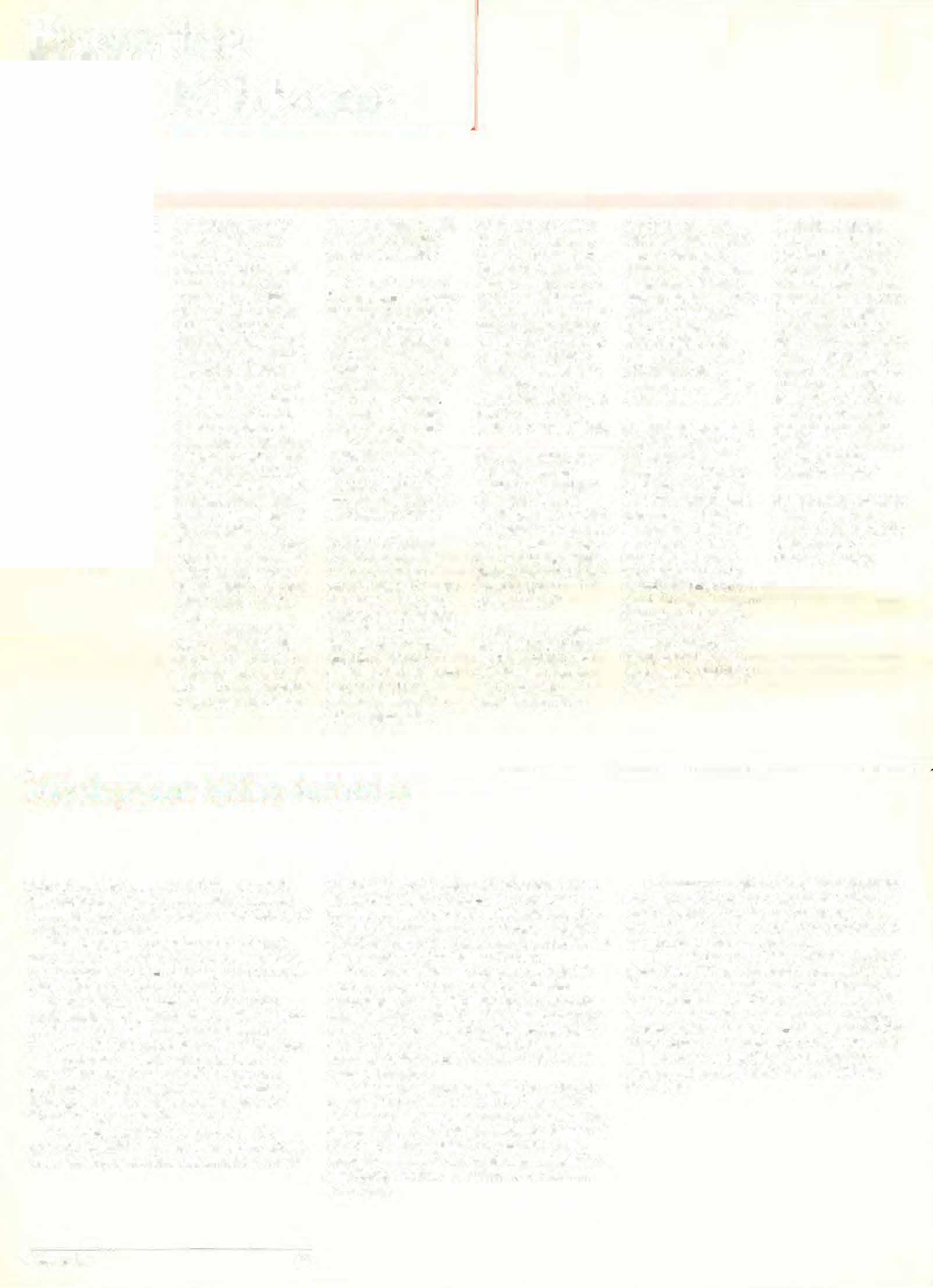
Development Office Acti,rities
Mrs. Gerard B. Lambert of Princeton, NJ, has established the G1·ace Lansing Lambert Professorship in Cell Biology at the School of Veterinary Medicine.
Mrs. Lambert, a member of the Veteri· nary School'sBoard of Overseers since 1978, is a long-time breeder of Morgan horses and Flat-Coated and Labrador Retrievers.
In 1974 Mrs. Lambert gave the Ortho· pedic Engineering Laboratory in the C. Mahlon Kline Orthopedjc and Rehabilitation Center to the School of Veterinary Medicine.
The Lambert chair wiU be held by Dr. Leon Weiss, professor of cell biology and chairperson of the Department of Animal Biology. Profiles of Mrs. Lambert and Dr. Weiss wiU appear in Bellwether V.
The Veterinary School has received a grant of $180,000 from the Mabel Pew Myrin Trust for the operation and maintenance of Bellwether
within each of AAHA's six regions." For many years Dr. Ticehurst practiced in Red Bank, New Jersey, and he is now a resident of Wildwood. Florida. Or. Ticehurst has been an active alumnus and has served as president of the Veterinary Medical Alumni Society and chairperson of Alumni Annual Giving. In 1972 he received the Society's Award of Merit.
Dr. Adrian Morrison. professor of anatomy, received a Guggenheim Fellowship grant of $2l080 for the year 1982. The grant is for a project entitled "Brainstem Sys· terns Regulating Aggressive Behavior During Different States of Consciousness."
Dr. Robert Whitlock has been elected president ot the Comparative Gastroenterology Society. and is presently president-elect of the
American College of Veterinary Internal Medicine. Dr. Whitlock is a founding member of the Comparative Gastroen· terology Society which is made up of physiolo· gists. biochemists, immunologists. clinicians, radiologists, and pathologists with a common interest in gastrointestinal diseases.
Dr. leon Saunders. adJunct professor of pathology, was awarded the Kitt Medal by the University of Munich on March 26, 1982. The medal is given in honor of Professor Theodor Kitt (1858-1941) who was one of Germany's leading veterinary pathologists. The award recognized Or. Saunders' contributions to neuropathology, ophthalmic pathology, and veterinary history, and for his role in founding the Journal of Veterinary Pathology.
Dr. Donald F. Patterson. Charlotte Newton Sheppard Professor of Medicine, and chief, section of medical genetics, was presented with the American Animal Hospital Association Award of Merit at the association's annual meeting in Las Vegas in April, 1982. The award was made in recognition of Or. Patterson's "pioneering and continuing research in iden1ifying specific types of cardiovascular disease in canines."
Or. Colin Harvey. professor of surgery, has been named as the new editor of the Journal of Veterinary Surgery.
the Alarik Myrln Memorial Research Build· ing at New Bolton Center. New Bolton Cen· ter also received a grant of $40,000 from the Stroud Foundation and an unrestricted gift of $10,000 from lthe Ohrstrom Foundation for the Friends o£ New Bolton Center.
The Animal Hescue League of Philadel· pbia hu awarded us another $2,000 for equipment for tlbe Wildlife Service and the Intensive Care Unit. The New YorkFarmers contributed $2.000 to the Scholarship Fund, and the Kennel Club of Philadelphia donated $1,000 tto the Friend11 of the Small Animal Hospital .
A bequest of nearly $20,000 from the Estate of Salem G. Fine, V.M.D Class o£ '35, will be used for student loans. and a bequest of approximately $100,000 from the Estate of Charlotte Everingham will provide equipment for oncolo1gy and radiology, establish a new Senior priz�!, and enhance the student loan fund.
An anonymous gift of $70,000 has enabled New Bolton Center to computerize all of its client/patient records, and an anonymous gift of $5,300 has been added to the School's unrestricted endowment fund.
Through the end of May, 513 donors have given $144, 717 to Veterinary ArulUal Giving. The Friends of the Small Animal Hospital have received $44,887 (rom 967 donors, and 99 donors have given $38,293 to the Friends of New Bolton Center. indudin� gifts forthe Kline Center. The total for private gifts and subscriptions to the School of Veterinary Medicine from July 1981 to May 1982 was $5,944.247.
14
Loyal Red and e
Alumni Day, on May 15, 1982, was blessed with beautiful weather, and was a huge success. The annual festivities were attended by 220 alumni and their family and friends. The oldest alumni in attendance were Dr. Evan L Stubbs (V '11) and Colonel Jesse D. Derrick (V '16). Dr. Carlos Rojas Maldonado (V '42}, having traveled from Bogota, Columbia was the individual who came the greatest distance.
In the morning the regular meeting of the Veterinary Medical Alumni Society was held in the spacious classroom of VHUP. with President A. Cleveland Brown (V '59) presiding. Or. Josephine Deubler (V '38), historian, reported some interesting statistics about graduating classes. Did you know that the Class of 1919 had only three members? The first woman graduated from the School was Dr. Deubler herself (1938). As of this year the total number of graduates is 3,736, with 405 women. Since 1978, each class has had more than forty women.
Or. Brown introduced various individuals, including the Fifty Year Class which had five members present.

Dean Robert A. Marshak addressed the meeting, and stressed that 1982·83 will be a year of extreme financial stress for the School. Various faculty �rouus are hard at work to determine how �e shan best dea\withthe problems. On the bngtlter side. Dean Marshak reported that the School has received two new. and very prestigious cha1rs. (see elsewhere in this issue of Bellwether) and that both VHUP and the Widener Hospital for Large Animals are being operated very efficiently and are generating considerable income. In closing, the dean
Secretary Block Visits
New Bolton Center
On Friday, May 14, Mr. John Block, U.S. Secretary of Agriculture, visited New Bolton Cent�r. Secretary Block was a member of President Reagan's entourage that visited a local dairy farm earlier that morning. Accompanying the Secretary to New Bolton Center were members of his staff, Mr. Penrose Hallowell, Secretary of A�riculture of Pennsylvania and his ataff, llnd other officials of the state �overnmenl.
After a brief tour of the facilities, con· due1ed by Dean Robert R. .Marshak and Associate Dean Richard McFeeley, the group had a luncheon in Allam House. Following lunch, Secretary Block accepted questions from representatives of various farm groups, and from the local and national press. An interestin� note was that Secretary Block recognized Dr. William Chalupa from having encountered him in meetings at the U.S. Department of Agriculture. In response to a question from Dr. Chalupa about future funds for research, the Secretary responded in an encouraging manner.
expressed confidence that the faculty and staff will be able to meet the problems of the coming year and also expressed his appreciation to the state government for the financial support we have received.
Another encouraging note was the report of Dr. Donald G. Lee (V '36), chairperson of Alumni Annual Giving. A total of 493 donors have contributed $137.536. Thank you for your support!
A highlight of the meeting was the presentation of Alumni Society Citations to four distinuished alumni. Those honored were Dr. Mark W. Allam (V '32), Dr. John E. Gadd (V '32). Dr. Robert L. Leighton (V '41), and Dr. Charles W. Raker (V '42). These awards were followed by the presentation of plaques to two former faculty. Dr. David K. Detweiler spoke briefly about Dr. Roger S. Amadon. former professor of physiology who died in September, 1980, at the age of ninety. Dr. Detweiler then unvieled a handsome plaque. He was assisted in this by Or. Amadon's widow. Dr. Mary Amadon (V '39) and his son, Terry. Funds for the plaque were contributed by a number of Dr. Amadon's former students. Following this presentation, Dr. Adrian Morrison, professor of anatomy, informed the Society that a plaque had been erected in the area of the anatomy laboratory to honor Dr. Donald G. Lee (V '32). former professor of anatomy.
The Nominating Committee presented its report, and the following people were nominated and then unanimously elected as officers for the year 198283: president. Or. Nancy Brown (V '73); first vicepresident, Or. Kenton Stokes (V '68); second vicepresident, Or. William Hardy (V '66); historian, Dr.
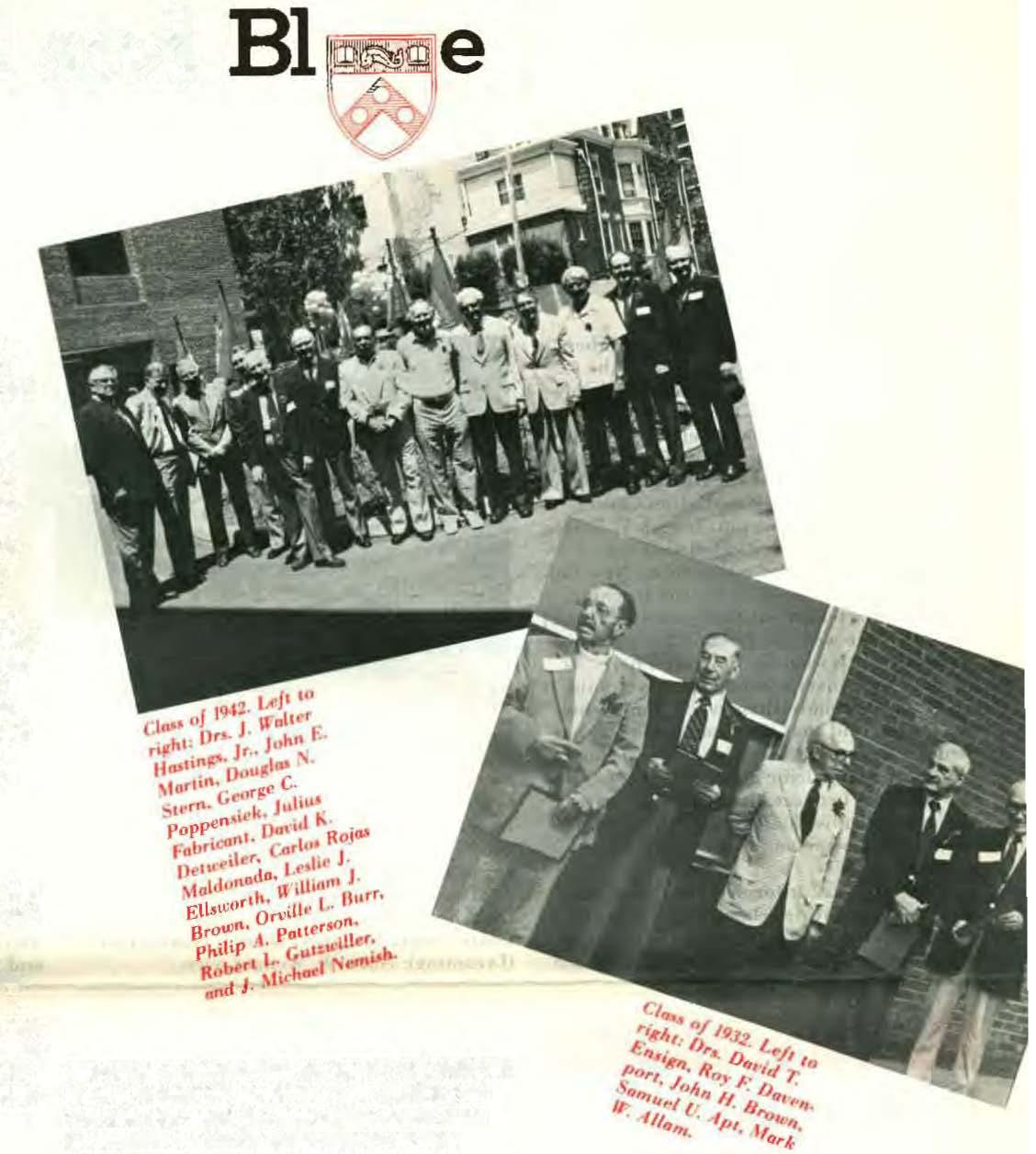

Josephine Deubler (V '38); and representative to the General Alumni Board, Dr. William Eccleston (V '61).
President Cleve Brown then expressed his appreciation for the cooperation given to him during the past year. He obviously enjoyed serving as president and did an excellent job. Thanks Cleve!
In her first official act as new president, Or. Nancy Brown presented the class banner to the president of the Class of 1982, Mr. Tony DiCarlo. There were 99 graduates in this class. Welcome to the Alumni Society and to the profession!
The business meeting was followed by a delicious luncheon and tours of VHUP. In the evening, alumni and families gathered in the parking pavilion of VHUP for dinner and dancing.
On Sunday, May 16, Dr. Mark Allam hosted a champagne brunch for the classes of 1932 and 1942 at New Bolton Center. On the previous evening the members of the Class of 1942 had a sumptuous dinner at the Chadd's Ford Inn. This was arranged by Or. Walter Hastings and was attended by thirty-five alumni and family. Both of these affairs provided the opportunity for some old· fashioned reminiscing and plenty of good cheer.
It was a glorious Alumni Oay. See you next year!
Sommer 1982 15
n May 19 and 20, 1982, eleven members of the House Agricultual Committee of the Commonwealth of Pennsylvania visited New Bolton Center. While at the Center the Committee held a formal meeting on a pending bill, and toured the facilities with Dean Robert R. Marshak and Dr. Richard McFeeley, associate dean for New Bolton Center. Committee Chairperson, Joseph V. Grieco of Lycoming County indicated that the Committee "had heard much about New Bolton Center, but wished to see the teaching, research, and treatment facilities with [their1 own eyes." He went on to say, "We are very impressed with what we have seen here. As the only veterinary school in Pennsylvania, it is now needed more than ever." Represents· tive Grieco said that the Committee was par· ticularly impressed with the emphasis on preventative medicine and on the cooperative ventures between the School, industry, and private individuals to develop teachink facilities for swine and dairy cattle husbandry.
Dean Marshak informed the Committee that, being a private school which generates considerable research funds and builds and maintains most of its buildings with private
Bellwether
University pf Pennsylvania
School of Veterinary Medicine
3800 Spruce Street
Philadelphia. PA 19104
House Agricultural Committee Visits New Bolton Center
Address correction requested
Howe Agricultural Commiuee at New Bolton Center. Left ro Right: Representatives John Showers, William R. Lloyd, Jr., Samuel W. Morris, June N. Honaman, Noah W. Wenger, Edwin G. JohmorJ, A. Carville Fmtcr, William K. Klingaman Sr., Dean Robert R. Marshak, Repre.�entativcs Joseph V. Grie.co, andJoseph R. Pitt.�. funds, the School o£ Veferinary Medicine is a good investment for the Pennsylvania agricultural community.
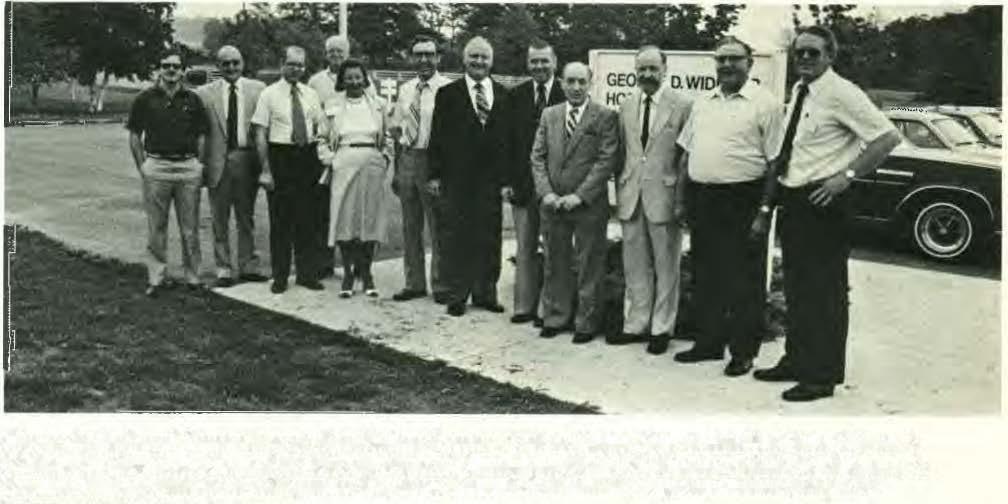
The members of the Committee (and their home counties) who visited New Bolton Center were: Joseph V. Grieco, chairperson (Lycoming); Noah W. Wenger, vice-
chairperson (Lancaster); A. Carville .Foster (York); June N. Honaman (York); Edwin G. Johnson (Blair); William K. Klingaman, Sr. (Schuylkill); WilHam R. Lloyd, Jr. (Somerset); Roger A. Madigan (Bradford); Samuel W. Morris (Chester); Joseph R. Pitts (Chester); and John Showers (Union).
Non-Profit Organization US Postage PAID
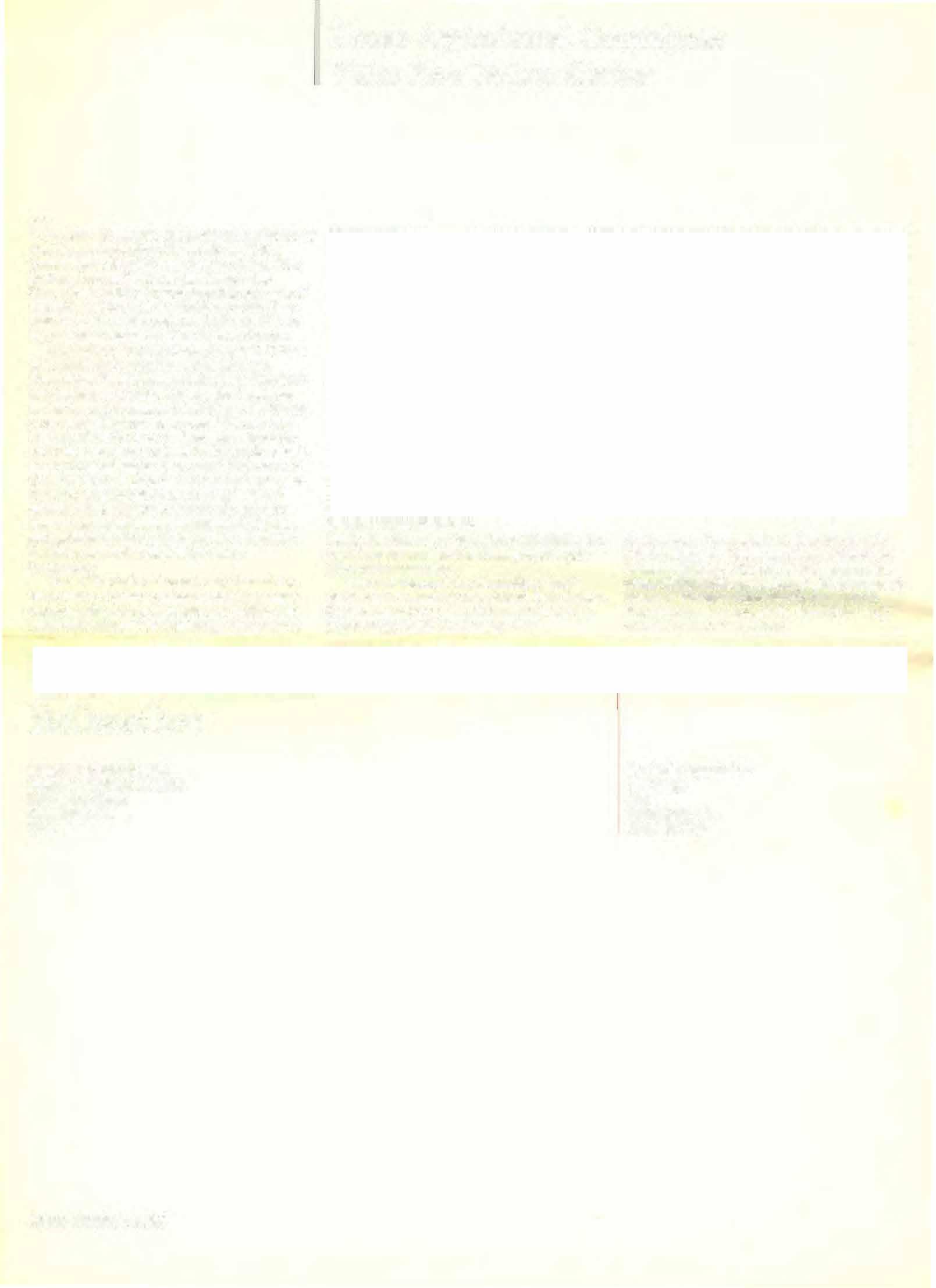
Philadelphia, PA
Permit No 2147
0
. ---- -











































